Refresh rate comparison: High refresh rate monitor guide (120Hz vs 144Hz vs 240Hz vs 360Hz)
High refresh rate monitor guide (120Hz vs 144Hz vs 240Hz vs 360Hz)
Taking a closer look at the main differences between 60hz, 144hz, and 240hz
Updated: Jan 5, 2023 11:46 am
Share this article…
Acer Nitro XV282K
ASUS ROG Swift PG32UQ
Samsung Odyssey G7 (C27G75T)
60Hz vs 144Hz vs 240Hz vs 360Hz: Video rundown.
What Is Hertz (Hz)?
High refresh rates over the years
What is a high refresh rate monitor?
How do high refresh rates affect your gaming experience?
What makes a 60Hz monitor different from 120Hz and 144Hz monitors?
60Hz Monitors
Best 60Hz 4K monitor
ASUS TUF Gaming VG289Q
120Hz monitors
Best 120Hz gaming monitor
Alienware AW3420DW Curved Gaming Monitor
144Hz monitors
Best 144Hz gaming monitor
BenQ ZOWIE XL2411P
240Hz monitors
Best 240Hz gaming monitor
Alienware AW2720HF
360Hz monitor
ASUS ROG Swift PG259QN
What monitor should I choose when upgrading?
High refresh rate monitor: FAQs
Is There a Big Difference Between 120Hz and 144Hz?
Is There a Big Difference Between 144Hz and 240Hz?
Can the Human Eye See 240Hz?
Can the Human Eye See 144Hz?
Can the Human Eye See 1000fps?
Can the Human Eye See 120fps?
Can the Human Eye See 8K?
Why Does 240Hz Look Weird?
Is 4K or 240Hz Better?
Do I Need Over 60 Hertz?
Is It Worth Going For 144Hz Or 240Hz?
Final Word
Best monitor in 2023
Some gamers prefer color accuracy and crisp graphics over fast refresh rates so they may favor a 4K monitor with an IPS panel – which commonly runs at 60Hz. But that isn’t always the case with modern monitors, with many offering up the best of both worlds when it comes to picture quality, speed, and responsiveness. Like always, there are a few things to consider before upgrading your monitor – and by the end of this article, you’ll know if you should stick with a 60Hz monitor or upgrade to a 120Hz, 144Hz, 240Hz, or even 360Hz model.
Below we have compiled a list of our top monitor picks for each category, accompanied by research data, comparisons, and more – all of which you could use to narrow down your options and improve your gaming experience.
But before we dig into the specifics, let’s take a look at the basics to get you started.
60Hz vs 144Hz vs 240Hz vs 360Hz: Video rundown.
youtube.com/embed/HNRdpD1WSd8?feature=oembed&autoplay=1″ src=”data:text/html;https://www.youtube.com/embed/HNRdpD1WSd8?feature=oembed&autoplay=1;base64,PGJvZHkgc3R5bGU9J3dpZHRoOjEwMCU7aGVpZ2h0OjEwMCU7bWFyZ2luOjA7cGFkZGluZzowO2JhY2tncm91bmQ6dXJsKGh0dHBzOi8vaW1nLnlvdXR1YmUuY29tL3ZpL0hOUmRwRDFXU2Q4LzAuanBnKSBjZW50ZXIvMTAwJSBuby1yZXBlYXQnPjxzdHlsZT5ib2R5ey0tYnRuQmFja2dyb3VuZDpyZ2JhKDAsMCwwLC42NSk7fWJvZHk6aG92ZXJ7LS1idG5CYWNrZ3JvdW5kOnJnYmEoMCwwLDApO2N1cnNvcjpwb2ludGVyO30jcGxheUJ0bntkaXNwbGF5OmZsZXg7YWxpZ24taXRlbXM6Y2VudGVyO2p1c3RpZnktY29udGVudDpjZW50ZXI7Y2xlYXI6Ym90aDt3aWR0aDoxMDBweDtoZWlnaHQ6NzBweDtsaW5lLWhlaWdodDo3MHB4O2ZvbnQtc2l6ZTo0NXB4O2JhY2tncm91bmQ6dmFyKC0tYnRuQmFja2dyb3VuZCk7dGV4dC1hbGlnbjpjZW50ZXI7Y29sb3I6I2ZmZjtib3JkZXItcmFkaXVzOjE4cHg7dmVydGljYWwtYWxpZ246bWlkZGxlO3Bvc2l0aW9uOmFic29sdXRlO3RvcDo1MCU7bGVmdDo1MCU7bWFyZ2luLWxlZnQ6LTUwcHg7bWFyZ2luLXRvcDotMzVweH0jcGxheUFycm93e3dpZHRoOjA7aGVpZ2h0OjA7Ym9yZGVyLXRvcDoxNXB4IHNvbGlkIHRyYW5zcGFyZW50O2JvcmRlci1ib3R0b206MTVweCBzb2xpZCB0cmFuc3BhcmVudDtib3JkZXItbGVmdDoyNXB4IHNvbGlkICNmZmY7fTwvc3R5bGU+PGRpdiBpZD0ncGxheUJ0bic+PGRpdiBpZD0ncGxheUFycm93Jz48L2Rpdj48L2Rpdj48c2NyaXB0PmRvY3VtZW50LmJvZHkuYWRkRXZlbnRMaXN0ZW5lcignY2xpY2snLCBmdW5jdGlvbigpe3dpbmRvdy5wYXJlbnQucG9zdE1lc3NhZ2Uoe2FjdGlvbjogJ3BsYXlCdG5DbGlja2VkJ30sICcqJyk7fSk7PC9zY3JpcHQ+PC9ib2R5Pg==”>
What Is Hertz (Hz)?
The refresh rate of your monitor is measured in hertz (Hz) and refers to the number of times your monitor refreshes the image its displaying every second.
One of the big benefits to owning a high refresh rate monitor is how it delivers information to your more frequently – therefore giving you an advantage over your competition. While this may not matter when playing a single-player title, it offers up big performance improvements when competing at the highest level in esports. Alongside this, general gameplay is much smoother when using a high refresh rate monitor, leading to a more immersive experience too.
Remember though, your PC or console must be able to match the refresh rate of the monitor in FPS (frames per second) to experience the full potential of its abilities. If it can’t, you won’t see the benefits of a high refresh rate panel.
High refresh rates over the years
Over the years, refresh rates have increased pretty steadily.
Monitor technology began to evolve at an exponential rate and the 240Hz monitor craze wasn’t far behind, offering another jump in visual fluidity. That being said, the difference between 144Hz and 240Hz wasn’t nearly as apparent as the jump between 60Hz and 144Hz. Fast forward to the modern day and we have a whole plethora of refresh rates to choose from, with only the best gaming monitors offering 360Hz and above.
If you don’t know how to check your monitor’s refresh rate, you can read up on how to check and change your monitor’s refresh rate, ensuring you get the most out of your equipment.
What is a high refresh rate monitor?
Back when LED monitors first became popular, a high refresh rate monitor was considered 60hz.
In current times, a high refresh rate monitor is classed as 240hz and above (360Hz-390Hz). At these speeds, monitors will be refreshing at 240-360 times per second, offering up incredible levels of fluidity when gaming. Having said that, and as we’ll discuss in more detail shortly, the visual boost you get when moving up the theoretical refresh rate ladder does diminish the higher you go. For example, jumping from a 60hz monitor to a 144hz monitor is like night and day. However, making a jump from 240hz to 360hz isn’t nearly as beneficial.
That being said, there is no substitute for a high refresh rate monitor – it really does make a huge difference (especially if you want to take your competitive gaming to the next level).
How do high refresh rates affect your gaming experience?
When it comes to high refresh rate monitors, seeing the difference is not nearly as noticeable for an average user as it is for competitive gamers. For esports gamers, these small differences play an integral role in winning competitive games, especially FPS games like CS:GO, Valorant, Overwatch, Battlefield, Fortnite, and PUBG.
The quality of the image will not improve, it is the fluidity of the motion and the perceived blur that is improved. A 60Hz monitor will display 60 different images per second while a 120Hz monitor will display 120 different images per second. In other words, Hz is the refresh rate and has nothing to do with improving the graphics whatsoever.
Similarly, this means 120Hz and 144Hz monitors give gamers the opportunity to make faster reactions when compared to a 60Hz monitor.
What makes a 60Hz monitor different from 120Hz and 144Hz monitors?
So, you now understand what hertz is in reference to a monitor and how it can affect your overall gaming experience – but what are the actual differences between 60, 120, 144, and 240Hz monitors?
In this section, we’re going to go over the different refresh rate values, the pros and cons of each type, and finally recommend a high-quality option for each category.
60Hz Monitors
60Hz monitors were once the standard with some CRT monitors going as high as 85Hz. On paper, they show 60 images per second, making them far superior to the 30Hz monitors. This means that a new image is generated every 16th ms.
4K gaming monitors have been growing in the market and this is largely down to them being cheaper than ever at the moment and games are slowly becoming available in 4K. So if you wish to get one down the line, then your best decision at the moment is to settle with a 60Hz gaming monitor until you can save up and afford one.
We have our personal pick presented in the 60Hz, 120Hz, 144Hz and 240hz category below so make sure you check that out. For a better overview of what is considered the best of the best when it comes to monitors, you can check our best monitor picks. We reviewed several monitors there from different categories and did an in-depth explanation along with the pros and cons of every single monitor.
Best 60Hz 4K monitor
Refresh Rate
60Hz
Response Time
5ms
Size
28″
Maximum Resolution
3840 x 2160
Panel
IPS
How We Review
Our thoughts
“Due to the VG289Q’s low refresh rate and response time, this monitor won’t be suited to all gamers. That being said, if you’re in the market for a 28inch 4K gaming monitor that won’t break the bank, this could be exactly what you’re looking for. It offers great colors right out the box and enough screen real-estate to multi-task in an efficient manner. The 4K resolution also provides fantastic picture clarity and depth, making single-player gaming titles all the more immersive.”
See the complete ASUS TUF VG289Q review
120Hz monitors
As previously mentioned, 120Hz monitors show 120 images per second and they produce a far superior output compared to a 60Hz monitor, which you will notice. In terms of time, this is approximately an image being produced every 8th ms.
For the 120Hz category, we don’t really recommend our readers to get one. It may seem silly featuring a 120Hz category but it is important that you are aware of the difference in price for 24 more hertz, it’s tiny and you’d regret not getting a 144Hz at the end of the day. That being said, we understand that not everyone has the budget to get 144 frames per second out of their games, so having a 120Hz option could be considered a nice middle ground to achieve a more responsive experience at a pinch.
In any case, 120Hz gaming monitors are hard to come by and with 144Hz monitors being so affordable these days, it would be silly not to recommend one.
Best 120Hz gaming monitor
Size
34″
Refresh Rate
120Hz
Response Time
2ms
Panel Type
IPS
Maximum Resolution
3440 x 1440
How We Review
Our thoughts
“The Alienware AW3420DW is one of the best monitors I’ve tested in some time.
See the complete Alienware AW3420DW review
144Hz monitors
For a 144Hz monitor, a new image is produced approximately every 7th ms. This is one of the reasons why you can see images much smoother when compared to 60Hz monitors, and only a little when compared to 120Hz monitors.
144Hz has fast become the new benchmark for smooth gameplay, with a wide variety of models popping up for all sorts of gaming needs. These types of monitors sport a variety of resolutions and are being produced from all gaming affiliated monitor manufacturers.
Best 144Hz gaming monitor
Size
24″
Refresh Rate
144Hz
Response Time
1ms
Panel Type
TN
Maximum Resolution
1920×1080
How We Review
Our thoughts
“Thanks to its high refresh rate and rapid response time, the Zowie XL2411P offers an extremely smooth and immersive gaming experience.
See the complete BenQ XL2411P review
240Hz monitors
The 240Hz gaming monitor has been around for some time now and is certainly worth getting. That said, they are only recommended if you have a high spec computer that can handle running games at high FPS – especially if you want to run G-Sync. If this is the case, we would personally recommend an RTX 30 series GPU to get you started.
In our 240Hz category, our best recommendation is the BenQ ZOWIE XL2740 gaming monitor, a solid choice with some impressive gaming features.
Best 240Hz gaming monitor
Size
27″
Refresh Rate
240Hz
Response Time
1ms
Panel Type
IPS
Resolution
1920 x 1080
How We Review
Our thoughts
“From a competitive gaming standpoint, the Alienware AW2720HF might be one of the best we’ve tested in some time.
See the complete Alienware AW2720HF review
360Hz monitor
360Hz monitors are the latest and best standard of gaming monitor in today’s market. On average, they are much quicker than 240Hz alternatives, however, they will come at a cost. The latest 360Hz monitors are some of the most expensive in today’s market, with many retailing at the higher end of the price spectrum.
That being said, there is no substitute for these rapid monitors, giving you a clear advantage over your competition.
Refresh Rate
360Hz
Response time
1ms (GTG)
Screen size
24.5″
Resolution
1920 x 1080
How We Review
Our thoughts
“Ultimately, whilst this monitor is a bit of a one-trick pony, it still outshines its rivals with its fantastic smoothness and overall image clarity.
See the complete ASUS PG259QN review
Now the real question between the comparison is up:
What monitor should I choose when upgrading?
If you have a 60Hz monitor and you want to upgrade, with there being such a small difference in performance between 120Hz and 144Hz, choosing the former isn’t the worst thing in the world, especially if you can’t afford a 144Hz option. However, if you can afford to get a 144Hz monitor then you should definitely invest your money in one.
If you are currently using a 144Hz monitor and have been considering an upgrade to the 240Hz you only need to make sure you have the PC power to take advantage of the higher hertz. Be sure to check what framerates you are expected to get in certain settings for your games, otherwise grabbing a higher hertz monitor could be a waste of money or require you to spend even more cash.
High refresh rate monitor: FAQs
Is There a Big Difference Between 120Hz and 144Hz?
The visual difference between 120Hz and 144Hz really isn’t that stark, and that’s mostly because 24 extra refreshes a second isn’t technically all that much. As long as it was backed by a powerful system, if you were to ‘A-B’ a monitor between these two refresh rates, you may not even notice the difference.
If you’d been using a 144Hz monitor for quite some time, and your eyes were fully acclimated to that refresh rate, then suddenly, your display dropped to 120Hz, you would probably pick up on it. It might not even be a conscious thing at first, perhaps more of mild eye irritation.
If, on the other hand, you jumped from 60Hz to these higher refresh rates sequentially, you’d notice a big improvement upon 60Hz, but differentiating them would still be pretty difficult.
Individual difference plays a large part in what you notice. Some people just have eyes more attuned to perceiving subtle contrasts in refresh rates.
Is There a Big Difference Between 144Hz and 240Hz?
Technically, yes, there is a big difference between 144Hz and 240Hz. 96 extra refreshes a second is pretty significant and amounts to overall smoother gameplay. However, even though 144Hz to 240Hz is a larger jump in speed than that of 60Hz to 144Hz, the difference between the former won’t be as noticeable as the difference between the latter. This is because as the refresh rate increases, our ability to perceive it weakens.
It’s also important to note that a system capable of making the most of a 240Hz monitor would cost a pretty penny, and even then, if you were playing on Ultra settings, you may not actually be experiencing the full force of that 240Hz screen.
Can the Human Eye See 240Hz?
Historically, it was believed that the human eye could only perceive the flicker rate of a display between 50 and 90Hz, but by that metric, there’d be no difference to us moving from a 120Hz display to a 240Hz display, and there definitely is a difference.
Think of it like this. If you set up a strobe light to flicker at a 240Hz rate and had someone move a toy boat quickly across the room, you would see the boat as frozen in place in multiple junctures of its journey. If the human eye couldn’t perceive 240Hz, the boat would appear to move smoothly across the room rather than the stuttered effect we do actually see.
Whether we can appreciate 240Hz to the fullest extent is questionable as it’s certainly true that the higher the frequency of a refresh rate becomes, the harder it is to distinguish differences. Some studies claim to have discovered that the upper limit of human Hz perception lies around the 250Hz zone, but bear in mind that humans or a varied bunch. Everyone is different, and therefore, our perception of Hz is too.
In any case, it’s around 250Hz that the brain registers something we’re seeing on screen as having realistic motion, which is to say the general flow of the images is true to life, even if the game is pretty wacky.
Can the Human Eye See 144Hz?
As it’s possible to appreciate 240Hz, it goes without saying that the human eye can see 144Hz. Even if it’s only slightly dissimilar to 120Hz, there is an extra level of refinement to motion quality.
If we take 250Hz as a general capacity standard for those with 20/20 vision, not only can we perceive 144Hz, but there’s room to shoehorn in over 100 more Hz. Telling the difference between 144Hz and 250Hz may still be quite difficult for some, as 144Hz motion is pretty dang silky in its own right, but it’s not quite on par with how we view motion in the natural world around us.
Can the Human Eye See 1000fps?
We don’t know its origins, but the myth goes that the human eye can only perceive 24 frames per second. Of course, this is a complete fabrication as we wouldn’t even deem a game playable if it fell below the 30fps mark, but then, how many frames per second can our eyes perceive?
Well, actually…1000. That’s right, folks; we are fantastical beings indeed! We can hypothetically perceive 1000 frames per second because that’s roughly how fast the neurons in our brains work.
Even though our eyes may be limited on what they can focus on, the information carried through to our brain is way more expansive. It’s weird, we know. It sounds like an oxymoron, but we are genuinely registering things we’re not even aware of every single day.
Do bear in mind, though, that 1000fps is just a generalized hypothetical figure. Your true capacity for perceiving frames may be far superior or inferior to someone else.
Can the Human Eye See 120fps?
Yes, the human eye can definitely see 120fps! Not only can we subconsciously register 120fps thanks to our super speedy neurons, but we can literally register it with our eyes.
The difference between 60 and 120fps is 8.4ms, which may come across as being fairly negligible, but in that 8.4ms is the power to eliminate any residual motion blur from the 30 – 60fps jump and smooth the game out a whole heck of a heap!
However, if you’re an experienced PC gamer, you’ll already be aware that frame rates aren’t all about visuals, but reducing latency too.
Can the Human Eye See 8K?
Yes, research suggests that the human eye does indeed register the difference when looking at an 8K resolution display. In fact, we could probably perceive the benefits of an even more densely pixelated resolution.
As we’re fleshy things, we can’t directly compare the power of our eyes and brain to that of a display, but it’s estimated that to create a camera with an equivalent resolution to our glistening peepers, it would need to contain 576 million pixels.
Considering 8K is a 7680 x 4320 resolution, it’s nowhere near as intricate as our eyes’ capacity for perceiving clarity.
Why Does 240Hz Look Weird?
There are a few reasons why 240Hz may look weird to some. Do you remember when HD televisions were first released? Your well-to-do friend was the first person you knew to get one.
This is because you’re witnessing something known as ‘The Soap Opera Effect’. This occurs because most television shows are shot using cameras with a much slower frame rate than the refresh rate of your friend’s display. It’s a side effect of motion interpolation, a process in which the display fills in the ‘judder’ of the slow frame footage with its own frames, smoothing motion out. The only issue is that this motion isn’t natural and in most instances can make moving objects appear superimposed on the set.
This doesn’t really apply to gaming, but 24Hz may still seem weird to you if you’ve been playing on a 60Hz monitor for years.
Is 4K or 240Hz Better?
Refresh rate is widely considered to be more important for gaming than resolution, so it makes sense to choose a 240Hz 1440p or 1080p monitor over a 60Hz 4K monitor.
Do I Need Over 60 Hertz?
144Hz should be considered the norm for any gamer who doesn’t wish to play in 4K. The cost of 144Hz monitors has been dropping in price year on year, with some great options available for under $200 finally beginning to show. Anything lesser will show a significant difference in performance and gaming experience when it comes to responsiveness.
As for 240Hz, it’s a big investment and only beneficial if you have a GPU that can handle the high-performance required to pump out 240FPS in your chosen games. This is especially the case if you play FPS games such as CS:GO, PUBG, or BF5.
Is It Worth Going For 144Hz Or 240Hz?
This depends on the games you play and what you want from your equipment. Competitive gamers like it fast and very accurate, any noticeable delay could result in a miss or slower reactions.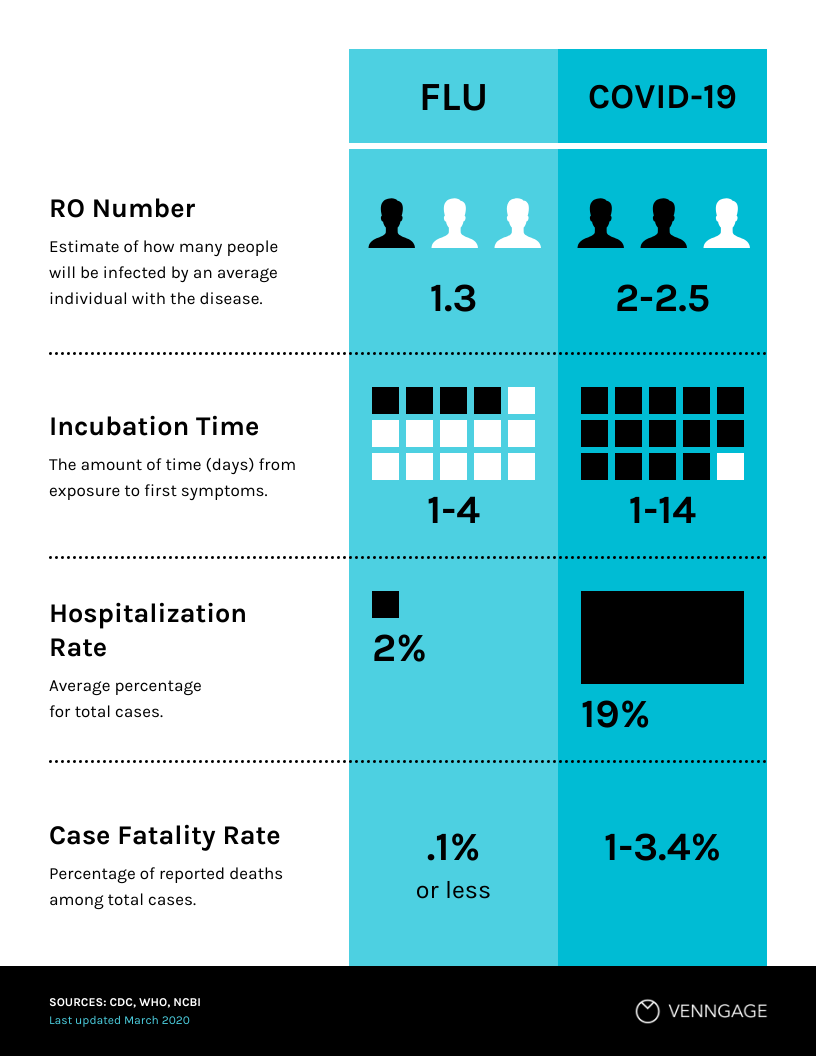
Where this becomes a little bit more tricky is towards the extreme ends of the gaming PC spectrum. If you are on a strict budget or just play casually, then a fast refresh rate monitor probably isn’t going to make all that difference to your gaming experience. 4K gamers may also opt for 60Hz, simply because 60FPS in max settings isn’t the easiest to achieve unless you have a godlike system and 60FPs is a much easier figure for your G-Sync/Freesync to work. While there are 4K gaming monitors with fast refresh rates out there, this is a relatively new idea and comes with incredibly high costs.
Final Word
We’ve gone over the key differences between 60Hz, 120Hz, 144Hz, 240Hz, and 360Hz to ultimately answer which high refresh rate monitor is best for gaming. Of course, the answer isn’t as black and white as we would like but when is it in the tech world?
The main point to take away is: if you are a competitive gamer who loves fast and responsive equipment, you can’t go wrong with a faster refresh rate monitor.
What is the refresh rate of you’re gaming monitor? Did you notice the dramatic difference between 60Hz and 144Hz? Drop us a comment below or head over to the WePC community to share with the team.
WePC is reader-supported. When you buy through links on our site, we may earn an affiliate commission. Learn more
60Hz vs 144Hz vs 240Hz vs 360Hz: Should You Upgrade?
- Table of Contents
- Top
- Why Does It Matter?
-
Which Should You Choose?
- 60Hz
- 144Hz
- 240Hz
- 360Hz
-
Additional Information
- Refresh Rate vs Frame Rate
- Refresh Rate vs Resolution
- Conclusion
- Discussions
Updated Nov 10, 2021 at 10:17 am
By Ryan Lim
BenQ EL2870U, LG 27GN800-B, BenQ Zowie XL2540, Dell Alienware AW2521HF
High refresh rate displays are becoming increasingly popular.
Why Does It Matter?
A monitor’s refresh rate refers to the number of times it can refresh the image per second. The more times it can refresh the image, the smoother and clearer the motion appears. Most people have become accustomed to viewing content on a 60Hz panel, as it has been the standard for some time now. However, 60 frames per second can feel stuttery to some people, somewhat like a flipbook (kineograph), the precursor of film animation, with pages ripped out.
As mentioned, increasing the number of times an image is refreshed significantly impacts motion smoothness, but it also improves clarity. As you can see in the section below, the image becomes increasingly sharper and easier to see the higher the refresh rate is.
Unfortunately, there are diminishing returns the higher you go. As shown in the table, the time between each frame drops significantly when you go from 60Hz to 144Hz, reducing it by 9.73ms, but that number decreases to 2.77ms if you go from 144Hz to 240Hz, and 1.39ms from 240Hz to 360Hz. Although everyone perceives motion and input lag differently, the vast majority of people will likely have a hard time seeing any difference above 240Hz. Going higher doesn’t hurt performance, but for people who aren’t competitive or esports gamers, the money is probably better spent on other features.
| Refresh rate | Time between frames |
|---|---|
| 60Hz | 16.67ms |
| 144Hz | 6.94ms |
| 240Hz | 4.17ms |
| 360Hz | 2.78ms |
Which Should You Choose?
There’s no right or wrong refresh rate. Most people are okay with a 60Hz refresh rate for everyday use because they’re accustomed to it, and many are also perfectly content gaming at 60Hz, so it depends entirely on your usage, preference, and tolerance.
60Hz
60Hz motion blur (Dell S2721QS)
Best for: Mixed usage, productivity, media consumption, and lower-end computers with integrated graphics.
60Hz is the standard refresh rate for computer monitors. It doesn’t require a dedicated graphics card to run most desktop programs at this refresh rate.
144Hz
144Hz motion blur (Acer Nitro XV282K KVbmiipruzx)
Best for: Mixed usage, gaming, multimedia.
144Hz is a very popular refresh rate that manufacturers continue to use, even when much faster panels are available. It provides a significantly smoother and responsive experience over 60Hz, whether for gaming or general desktop use. It’s also a good choice for media consumption because a 144Hz monitor can display 24Hz content like Blu-Ray movies without any frame rate conversion. A mid-range PC is required for 1080p and 1440p gaming, but you need a high-end graphics card for 4k.
240Hz
240Hz motion blur (Gigabyte AORUS FI27Q-X)
Best for: Enthusiast and competitive gamers with mid-to-high-end PCs.
240Hz monitors are relatively new on the market and are becoming very popular with enthusiasts and competitive gamers. They’re available in a 1080p or 1440p resolution. Depending on the resolution, you need a mid-to-high-end graphics card to take full advantage of these monitors.
360Hz
360Hz motion blur (Dell Alienware AW2521H)
Best for: Competitive, esports gamers.
360Hz monitors have only been around for a short time. They’re limited to a 1080p resolution for now, but we expect to see higher resolution models appear soon. They’re best suited for competitive esports gamers who need the lowest possible input lag. They also require high-end computers to push out such high frame rates.
Additional Information
Refresh Rate vs Frame Rate
Getting a high refresh rate monitor doesn’t automatically give you high frame rates; you still need a computer with enough graphical processing power to support it, as playing at 60 frames per second on a 360Hz display isn’t much better than playing on a 60Hz display.
Refresh Rate vs Resolution
As explained above, there are diminishing returns when it comes to the refresh rate. Most people can perceive improvements to smoothness and responsiveness up to around 240Hz; however, the difference between a 240Hz and 360Hz panel is so small that even competitive gamers might have a hard time telling them apart. If you have a choice between a 1440p 240Hz and a 1080p 360Hz monitor, you’re probably better off getting the 1440p option, as the increase in resolution has a much larger impact on the overall user experience.
Conclusion
If you only use your monitor for productivity, a 60Hz refresh rate is likely good enough for most people. However, there are benefits in getting a higher refresh display because it makes the system feel smoother and more responsive. For gaming, the higher the refresh rate, the better it is, but as mentioned, most people can’t see the difference past a certain point, and you also need a computer powerful enough to achieve high frame rates.
What is the screen refresh rate, how does it work and what does it give the user? — HONOR on vc.ru
Large screen, capacious battery, powerful processor – the terms are quite understandable to most users, at least by the epithets that stand next to them. However, with the screen refresh rate, everything is much more complicated and it is unlikely that you will be able to guess it yourself. But this is an important characteristic, thanks to which the picture on the gadget’s screen will be smoother, and scrolling will be faster. 🏎💨 But first things first.
17938
views
What is the screen refresh rate?
All content on the screen of our smartphone is in motion. And although it seems to us, ordinary users, that all information is static, the picture at this moment is in constant motion: the pixels that receive data are in a hurry to share them with us, to do it as quickly as possible and with a certain frequency. At the same time, the information arrives so rapidly that it seems to our brain that the image on the screen does not move at all.
60-90-120
In fact, the refresh rate is the frame rate on the screen. It is responsible for how quickly the picture changes on the screen when we use a smartphone. The number of data appearing per second on the screen in Hertz (Hz) is measured. Most often you can find a screen refresh rate of 60, 90, 120 and much less often – 144 Hz.
For example, a screen with a refresh rate of 60 Hz displays the received data twice as slowly (the picture seems to slow down a bit) than a screen with a refresh rate of 120 Hz (the picture is smoother).
Refresh rate is relatively new for smartphones, but 90 or 120 Hz refresh rates can already be found not only in flagship devices, but also in mid-range devices.
The time that one image remains on the screen is called the refresh time. If the update time is lower, then the frequency will be high, and vice versa. That is, a 120Hz screen has a slower refresh time: 60Hz = 17ms, 120Hz = about 8ms.
A smartphone with a higher screen refresh rate can process more pixel changes per unit of time. It sounds nice, but what does it give the smartphone owner from a practical point of view and why is a high refresh rate a plus for the device if the data update time is measured in milliseconds and human vision cannot catch these changes in any way?🚀👀🤷♀
Benefits of high refresh rates
Our vision is not able to see every frame updated on the screen, but we can see the result of these rapid updates: a smoother picture when scrolling through photos on social networks, for example, or during gameplay. Any animation at a high screen refresh rate looks smoother.
Many users confuse the screen refresh rate, which is measured in Hertz, with the frame rate in mobile and other games, which is usually referred to as “fps”. In the first case, we are talking about the number of frames that the screen can show per second, in the second, we are talking about the number of frames that the processor and GPU send to the screen during the game.
Adaptive mode and energy management
Despite all the advantages of smooth operation, a smartphone whose screen supports a higher refresh rate has one drawback – increased power consumption. A smartphone whose screen runs at a refresh rate of 120Hz consumes more power than a screen that supports 60Hz, for example. However, manufacturers of modern devices have found a way out of this situation by making the refresh rate adaptive.
Adaptive screen refresh rate allows you to switch between the available options depending on the application you are using, battery level or brightness. Thanks to this, the device copes better with the additional load on the battery and retains a charge longer.🔋🔌
So, HONOR 50 is ready with a maximum refresh rate of 120 Hz to show the user menu navigation or scrolling through lists, but for applications that do not support such high values, it will reduce the frequency to the usual 60 Hz so as not to waste battery power.
The adaptive frequency also avoids problems of radical incompatibility with applications whose developers have not adapted them for higher hertz. It is also worth paying attention to the class and the rest of the hardware of the device, because smartphones with entry-level processors will please their owner with increased hertz only in the device menu and several applications, otherwise the energy consumption will be too high.
Total
Screen refresh rate is a really important, but not the only characteristic that you should pay attention to when choosing a device. At the same time, it should be noted that the quality of the screen itself does not depend on the refresh rate: the screen can be good, but not have the highest refresh rate.
The screen refresh rate is more about the convenience of device interaction with the user, a high refresh rate gives us a smooth picture when browsing social networks, scrolling or while playing mobile games.
Monitor difference 60, 144, 240, 360 Hz0001
As technology advances rapidly, many users sometimes wonder what needs to be done to keep up with them. The brilliance of modern GPUs often overshadows the fact that a monitor with an appropriate refresh rate is also the key to running high-quality graphics.
What is the screen refresh rate? This is a characteristic that means the maximum number of frames per second that the monitor can display. The higher the screen frequency, the smoother and more dynamic the image. Let’s take a look at the difference between different monitor refresh rates and find out which refresh rate is best for gaming.
Find a monitor
Contents:
- Why is monitor refresh rate important?
- What is the refresh rate and what is the difference?
- 60 Hz and 144 Hz
- 144 Hz and 240 Hz
- Monitor refresh rate 360 Hz
- Prerequisites for gaming at 144 Hz and above
- Technology for Smooth Gameplay
- G-Sync
- DLSS
- Reflex
- Which frequency is better?
- Where can I buy a monitor with a refresh rate that’s right for you?
Why monitor refresh rate matters If the card is powerful, images will be sent faster.
It’s especially important for a gamer to have a great monitor that can keep up with the GPU. Otherwise, the graphics card will unnecessarily produce frames that the monitor cannot display. Moreover, unnecessary overload of the GPU can lead to its overheating and other problems.
Now let’s look at some of the potential pros and cons of each monitor and find out which refresh rate is best for gaming.
What is the refresh rate and what is the difference
Standard monitors have a frequency of 60 Hz, but there are monitors with a higher frequency – 144 Hz, 240 Hz and even 360 Hz. Hertz (Hz) is the number of images that are displayed per second when the monitor refreshes. The higher their number, the more spectacular and detailed the picture on the display will look. This parameter is very important for games, because this process is characterized by a constant frame change.
60Hz & 144Hz
The main reason many people still use a 60Hz monitor is probably due to a limited budget. In terms of technology, this is the oldest and well-established refresh rate technology. However, it is already out of fashion. Why can’t people who used a 144Hz monitor and above go back to 60Hz? Thing is, everything from the desktop mouse cursor to heavy gaming felt sluggish after upgrading to 144Hz.
If you still like a 60Hz monitor, don’t try another with a higher refresh rate, at least until you have the money to upgrade.
Racing games were not chosen by chance, as they are the ones that make the difference. As mentioned above, there’s only one good reason you’d settle for a 60Hz monitor these days, and that’s on a tight budget. If you don’t play video games where framerate plays an important role, you have nothing to worry about.
Games like Civilization 6 look great on a 60Hz display.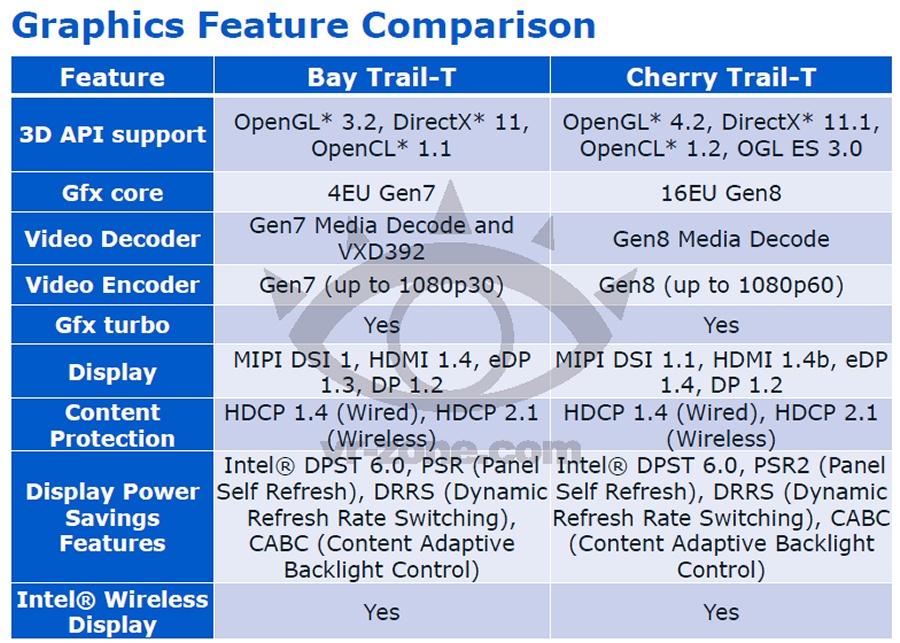
144Hz and 240Hz
For a long time, 144Hz refresh rate was the minimum requirement for gaming battles. However, the current trend is to use much more – 240 Hz. One of the main reasons why not all users have started using a 240Hz monitor is that the difference between them is not as sharp as when going from 60Hz to 144Hz. Recently, an increasing number of professional esports players are moving to a 240Hz screen.
If you want to upgrade your gaming monitor, you should definitely go straight to 240Hz and skip the 144Hz option. However, if you’re looking for a competitive edge when using 144Hz, you might want to wait a bit and jump straight to 360Hz. Of course, all of this only makes sense if you have hardware that can support that frame rate.
360Hz monitor refresh rate
Many of those who thought 240Hz was the height of a gamer’s dream were surprised by NVIDIA and ASUS’ announcement of a 360Hz monitor at CES 2020. The biggest improvement is the ability to render game frames every 2.8ms and it seems like the jump would be similar to going from 144Hz to 240Hz.
For the ASUS ROG Swift 360Hz monitor, NVIDIA also provides an “advanced G-Sync processor”. ASUS aren’t the only ones to release a 360Hz monitor, but they were the first to announce it. Alienware, Acer, MSI and many others are also becoming part of the 360Hz market.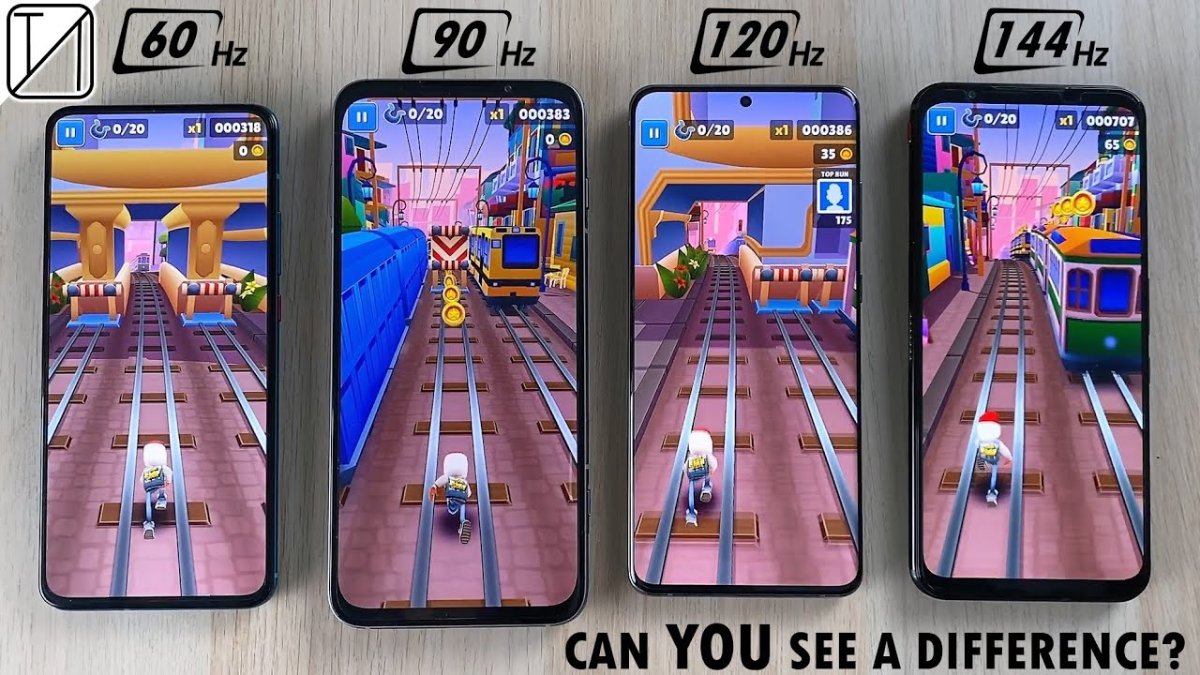
For better clarity, you can see below a review of one of the fast monitors with a frequency of 360 Hz against a background of 144 Hz and 240 Hz.
Prerequisites for gaming at 144Hz and above
To find the best refresh rate for games, you need to consider a lot of things. Note that a high refresh rate monitor is useless if you don’t have the right hardware. Of course, you can get a good frame rate by optimizing a few settings. However, there is nothing you can do to increase the maximum frame rate provided by the monitor. Over time, you just have to get a more powerful graphics card.
NVIDIA’s RTX 3070 series is a great choice for 240Hz gaming, while the RTX 3060 series is good enough for 144Hz gaming. Alternatively, you can choose AMD RX 6700 XT or RX 6800 XT. Keep in mind that the proposed options are more suitable for modern games.
Technologies for Smooth Gameplay
Today, there are some technologies that can provide a smooth gaming experience with fast response, without tearing or shaking. We will talk about them below.
G-Sync
This is a technology developed by NVIDIA to fix a problem that sometimes occurs when the monitor’s refresh rate differs from the GPU’s output frame rate. This effect is called screen tearing, to fix it, it is recommended to use G-Sync.
As a result, scenes appear in the same second, objects look sharper, and the game becomes smoother, providing an excellent visual experience and a significant advantage over the rival.
DLSS
DLSS is an anti-aliasing technology that, using tensor cores and AI, improves performance without significant loss in image quality. Using this technology with RTX graphics cards, you can add up to 30 frames per second, while significantly improving image quality.
With this technology, your 4K monitor will provide the best picture. 1080p monitors get very fast refresh rates and improved visual clarity.
Reflex
This is a new set of graphics card, G-Sync display and software technologies that measure and reduce system lag in e-games. For any gamer, responsiveness is an important parameter, because the update of the display determines whether you will have an advantage over the enemy. Built into today’s NVIDIA G-Sync monitors, this technology analyzes PC efficiency and responsiveness with the utmost precision. In order to achieve the lowest latency possible, you will need NVIDIA Reflex-compatible hardware – an RTX graphics card, specialized wired mice and monitors.
NVIDIA G-Sync monitors are specialty displays designed for video games only. That is why they feature the fastest refresh rates up to 360 Hz.
What is the best refresh rate
The answer is 360 Hz. However, which one to choose? The choice will depend on what games you play and what you want to get out of your gaming experience.
If you like simulation games at a leisurely pace, 60Hz games are perfect for you. You can invest the money you save into a memory or processor upgrade.
If you are a general multiplayer gamer, the monitor should be 144Hz. When playing at 144Hz, you won’t feel like you’re being limited by your hardware, as you might be at 60Hz. 240Hz monitors are a must if you want to go anywhere in the professional gaming world.
360Hz monitors are the perfect choice for those who want to get the most out of their games and outperform the competition. In addition, these monitors use modern technologies: G-Sync, DLSS, Reflex.


 2 x 7.6 x 0.7 inches, 2.18 pounds
2 x 7.6 x 0.7 inches, 2.18 pounds 1 inch (1920 x 1080 pixel)
1 inch (1920 x 1080 pixel) 1 x 9.7 x 0.7 inches, 3.3 pounds
1 x 9.7 x 0.7 inches, 3.3 pounds 6 inch (1366 x 768 pixel)
6 inch (1366 x 768 pixel) 37 x 8.04 x 0.7 inches, 2.65 pounds
37 x 8.04 x 0.7 inches, 2.65 pounds We pride ourselves on customer satisfaction so feel free to give us a call, thank you for shopping and best of wishes! – DCD Team
We pride ourselves on customer satisfaction so feel free to give us a call, thank you for shopping and best of wishes! – DCD Team ..
.. 00
00 1″ Core i3 2.5GHz CPU 4GB 320GB
1″ Core i3 2.5GHz CPU 4GB 320GB 95
95 00
00 6GHz Ram: 4GB (More than Enough memory for Heavy Multi-tasking) Hard Drive: 250GB…
6GHz Ram: 4GB (More than Enough memory for Heavy Multi-tasking) Hard Drive: 250GB… 99
99 6″ Laptop Computer Notebook Core 2 Duo 4GB 250GB DVDRW
6″ Laptop Computer Notebook Core 2 Duo 4GB 250GB DVDRW We are a…
We are a… ..
.. 99
99 1GHz 4GB 320GB Webcam and WIFI
1GHz 4GB 320GB Webcam and WIFI ..
.. 99
99 00
00
 0
0 
 0 – 3 x Type-A
0 – 3 x Type-A  7k. You’d better ask around on the overclockers.ru forum and see reviews
7k. You’d better ask around on the overclockers.ru forum and see reviews  ..
..  ..
.. 

 ) Inexpensive (for this class).
) Inexpensive (for this class).  8 L.
8 L. 
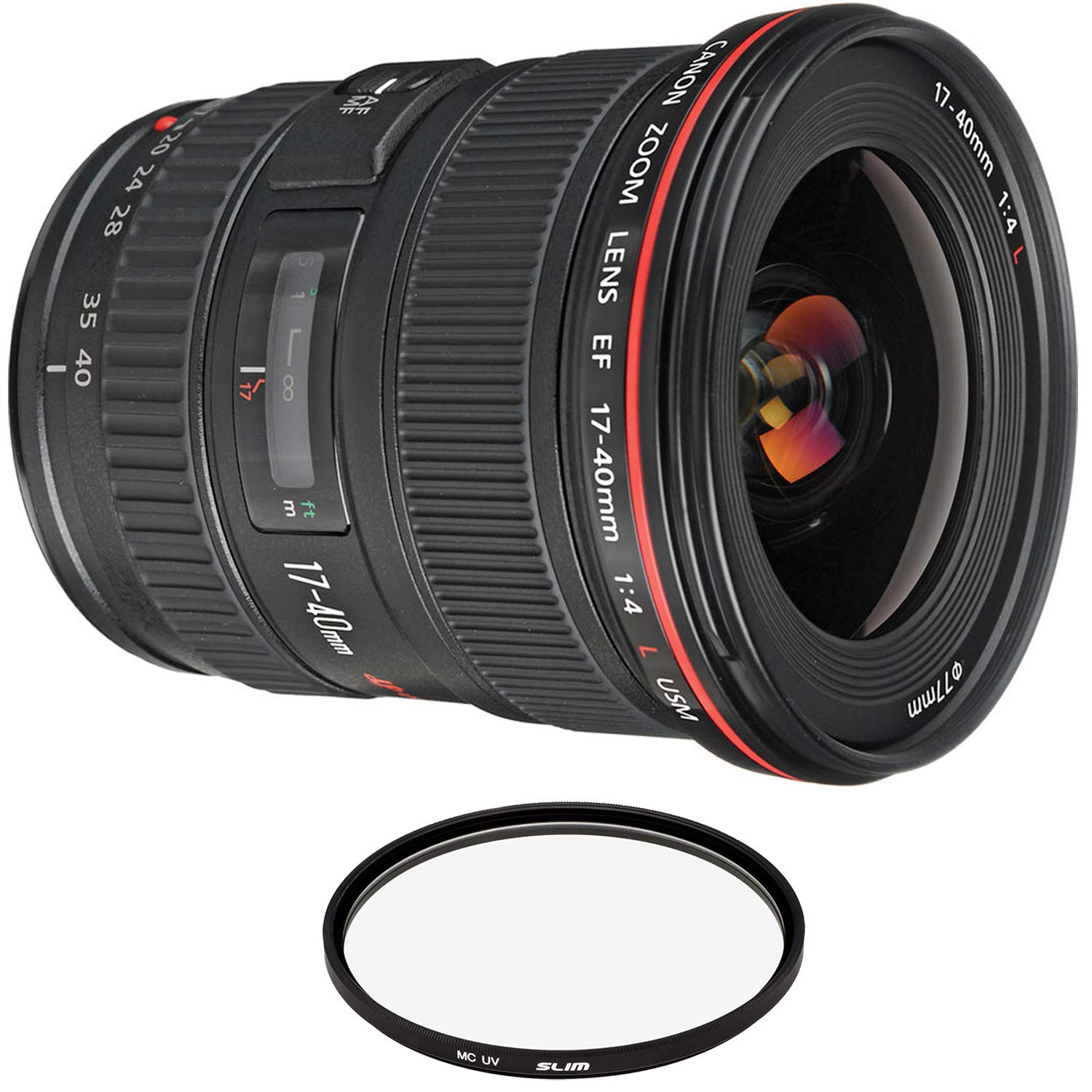
 (Same as 16-35mm.)
(Same as 16-35mm.)  For less money than many other lenses, it offers better performance.
For less money than many other lenses, it offers better performance. It is much better than the 16-35mm L I tried.
It is much better than the 16-35mm L I tried.  This distracts audiences if the image changes size slightly as the conversation goes from actor to actor.
This distracts audiences if the image changes size slightly as the conversation goes from actor to actor. 6
6 Considering you’d need a 44″ (1.1m) wide screen to see the entire images, I’d say this is pretty good.
Considering you’d need a 44″ (1.1m) wide screen to see the entire images, I’d say this is pretty good. 

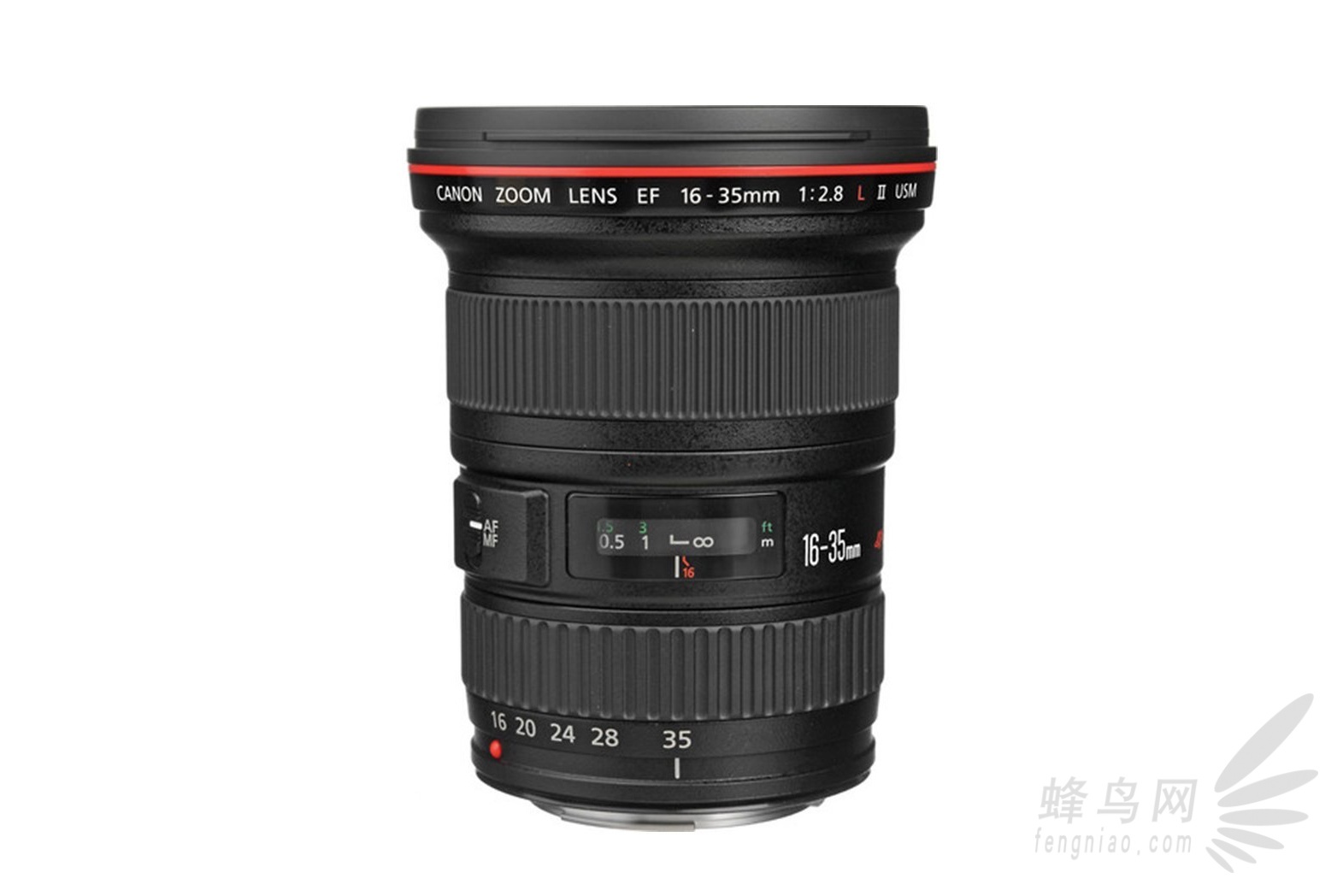
 Mouse-over to see correction in PS CS2.
Mouse-over to see correction in PS CS2.  5
5
 If you wish to make a printout for personal use, you are granted one-time permission only if you PayPal me $5.00 per printout or part thereof. Thank you!
If you wish to make a printout for personal use, you are granted one-time permission only if you PayPal me $5.00 per printout or part thereof. Thank you!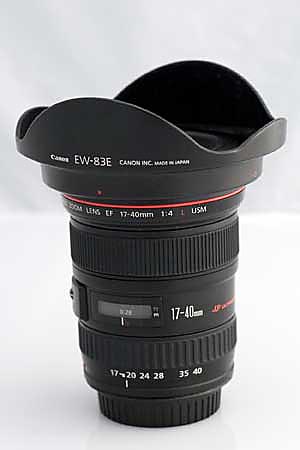 This ultra wide-angle lens is lightweight, extremely well-built, and optically sufficient. In this review, I will share five things I love about this lens, and three things to be aware of.
This ultra wide-angle lens is lightweight, extremely well-built, and optically sufficient. In this review, I will share five things I love about this lens, and three things to be aware of. That said, overall, I couldn’t be happier with the build.
That said, overall, I couldn’t be happier with the build. If I were to do this using a heavy 2.8 lens, my wrist would wear out but the end of the dance. Thus, the size and weight of the Canon EF 17-40mm f/4L lens is ideal!
If I were to do this using a heavy 2.8 lens, my wrist would wear out but the end of the dance. Thus, the size and weight of the Canon EF 17-40mm f/4L lens is ideal!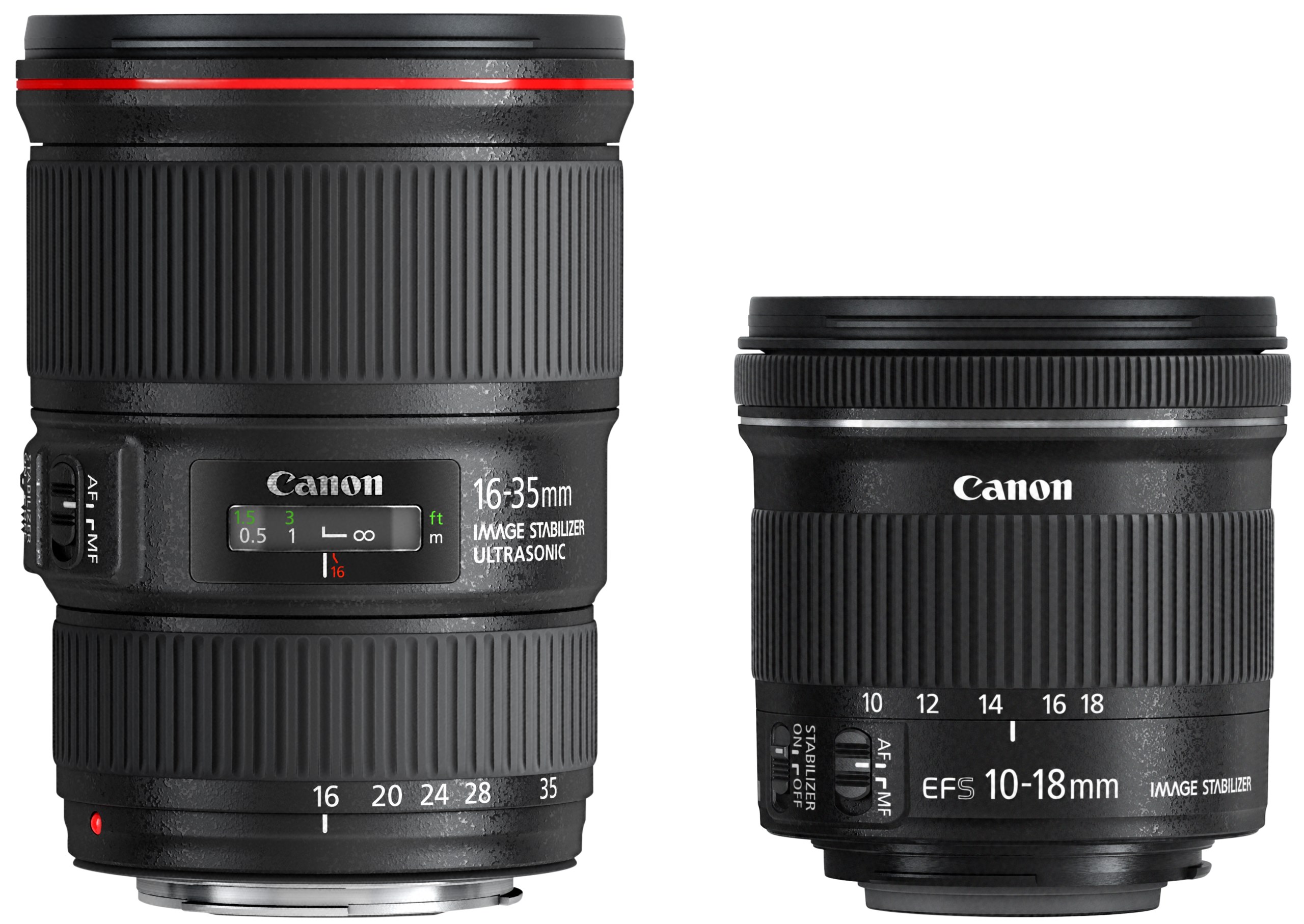
 Lastly, I use the 17mm focal length for dance photos. The wide angle allows me to get right in close to the bride and groom while they are dancing and capture them and their wedding parties having the time of their lives. If I were to try and do this from across the room, not only would there be guests’ bodies blocking them, but the “feel” or emotion of the image would be completely different. I want dance images to allow the viewer to feel that they are right there in the middle of the action all over again!
Lastly, I use the 17mm focal length for dance photos. The wide angle allows me to get right in close to the bride and groom while they are dancing and capture them and their wedding parties having the time of their lives. If I were to try and do this from across the room, not only would there be guests’ bodies blocking them, but the “feel” or emotion of the image would be completely different. I want dance images to allow the viewer to feel that they are right there in the middle of the action all over again! 
 In this case, photographers would be better set with a 2.8 zoom lens to allow for shooting at a lower ISO. For this reason, I use the Canon EF 35mm f/1.4L II USM lens as my main lens for candids so that I have the option of shooting wide open at f/1.4. That said, there are a few rare occasions that I use the Canon EF 17-40mm f/4L USM lens for candid shots such as when the bride is doing a grand reveal of her wedding dress to her bridesmaids and I need a wide angle lens to capture the entire group’s reaction. In situations like this, the 17-40mm works great as long as there is enough window light!
In this case, photographers would be better set with a 2.8 zoom lens to allow for shooting at a lower ISO. For this reason, I use the Canon EF 35mm f/1.4L II USM lens as my main lens for candids so that I have the option of shooting wide open at f/1.4. That said, there are a few rare occasions that I use the Canon EF 17-40mm f/4L USM lens for candid shots such as when the bride is doing a grand reveal of her wedding dress to her bridesmaids and I need a wide angle lens to capture the entire group’s reaction. In situations like this, the 17-40mm works great as long as there is enough window light! This lens has truly stood the test of time and, as I look at switching over to the Canon R system, it will definitely be a lens I adapt to my Canon EOS R5. I will continue to use it for capturing context photos, large group photos, and dance photos. For the price, quality, and the size, it can’t be beat!
This lens has truly stood the test of time and, as I look at switching over to the Canon R system, it will definitely be a lens I adapt to my Canon EOS R5. I will continue to use it for capturing context photos, large group photos, and dance photos. For the price, quality, and the size, it can’t be beat! Its compact and lightweight design makes it the perfect travel companion.
Its compact and lightweight design makes it the perfect travel companion.  Super Spectra coating ensures accurate color balance and minimizes flare and ghosting. The lens uses three aspherical elements to ensure excellent image quality throughout the 17-40mm zoom range. Super Ultra Low Dispersion (Super UD) glass prevents chromatic aberrations.
Super Spectra coating ensures accurate color balance and minimizes flare and ghosting. The lens uses three aspherical elements to ensure excellent image quality throughout the 17-40mm zoom range. Super Ultra Low Dispersion (Super UD) glass prevents chromatic aberrations. 

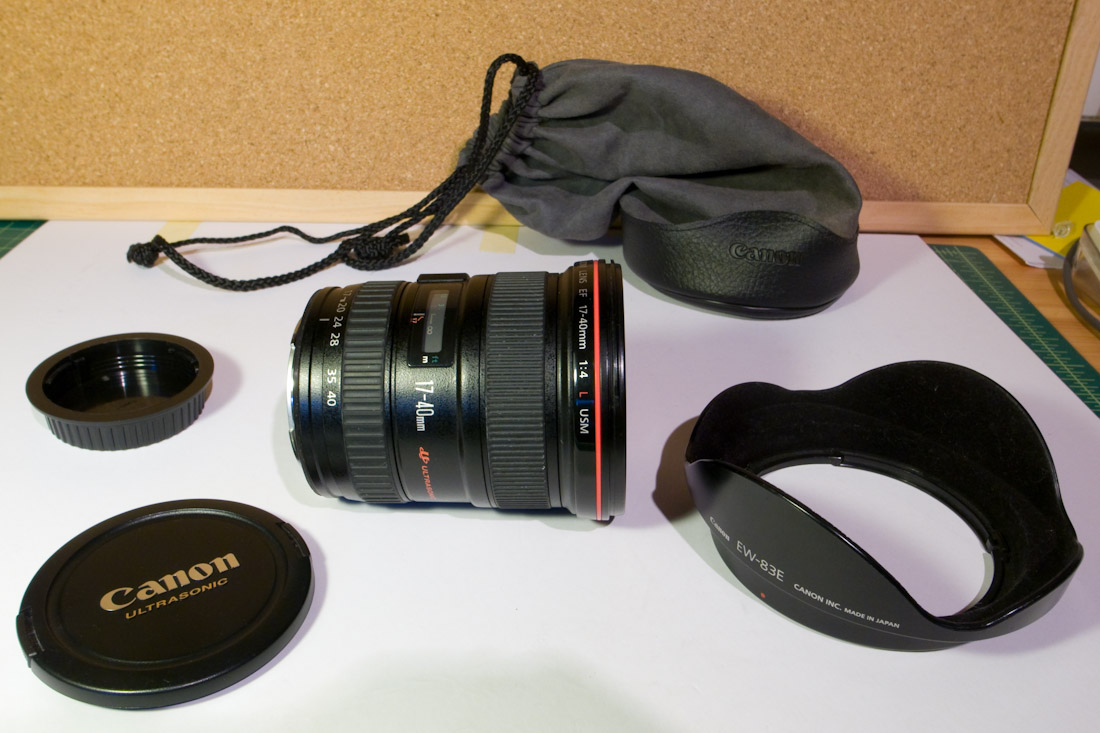 No wonder: the craving for good (in relation to Canon optics, “good” means L-series models) is easy to explain, and EF
No wonder: the craving for good (in relation to Canon optics, “good” means L-series models) is easy to explain, and EF
 24x
24x  Let the model be one of the three most inexpensive professional Canon lenses, on
Let the model be one of the three most inexpensive professional Canon lenses, on
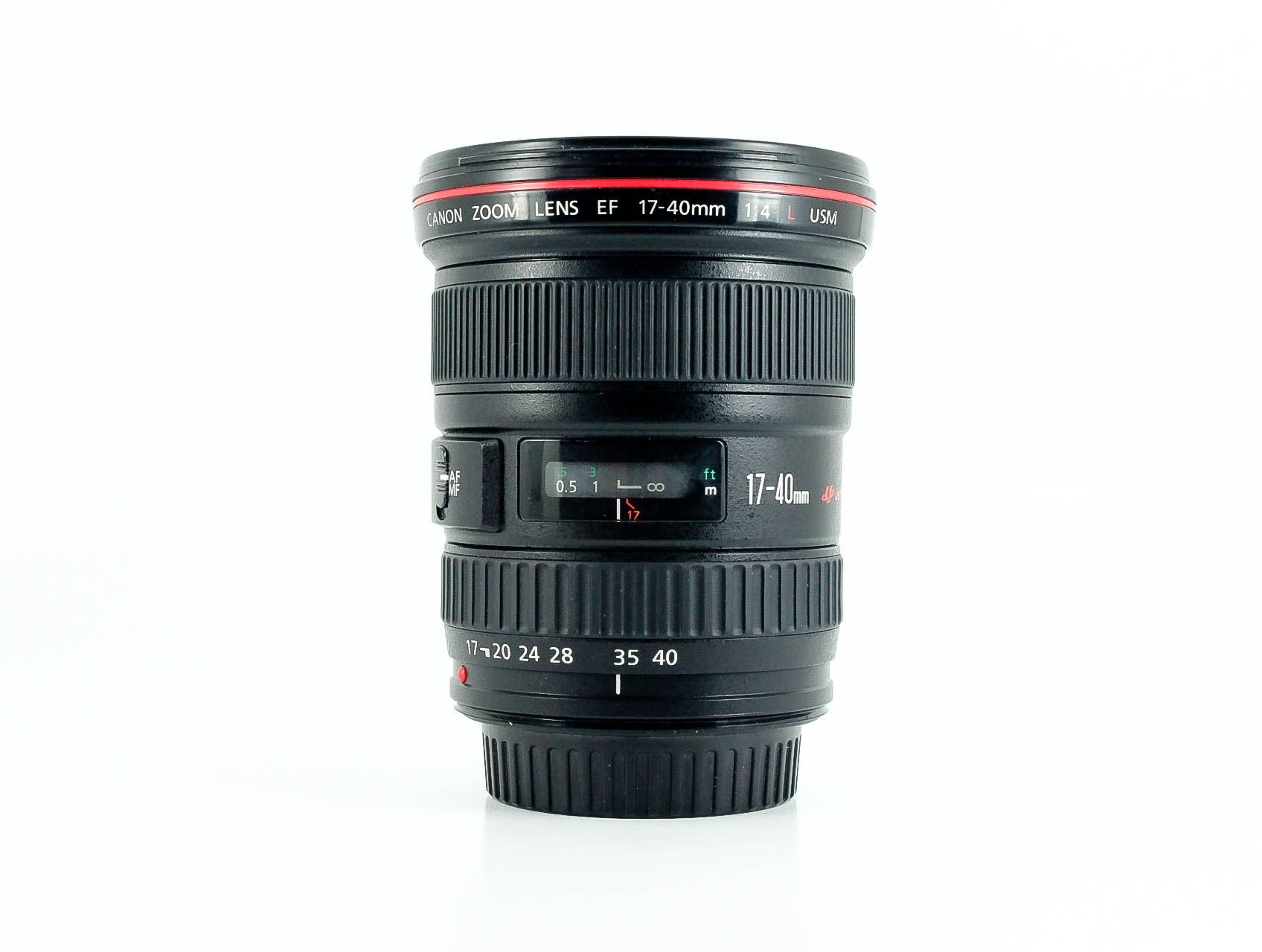
 There is no tendency to “yaw”.
There is no tendency to “yaw”.



 ..
..
 ..
..
 ..
..
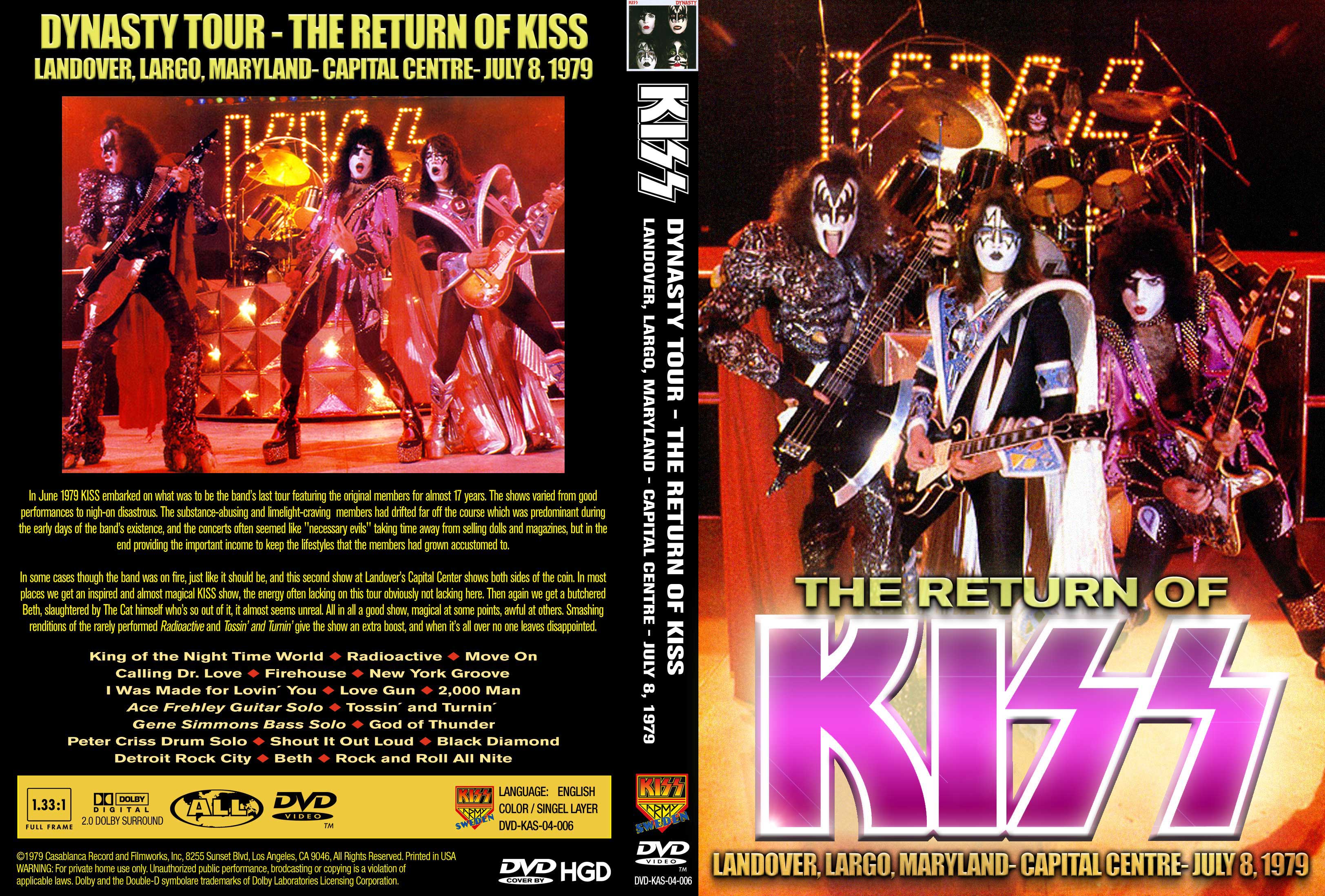 ..
..
 ..
..
 ..
..
 com
com
 ..
..
 ..
..
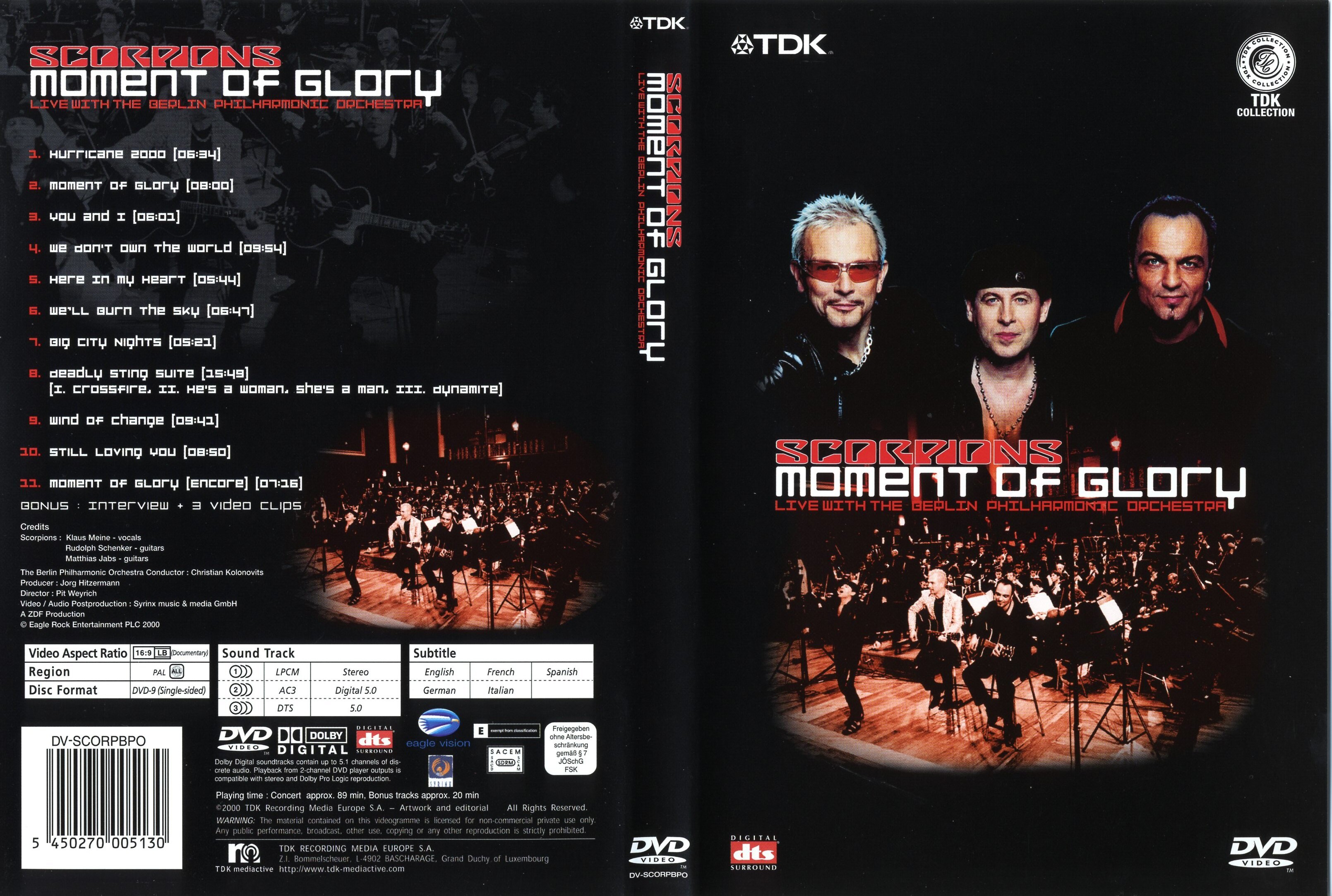 ..
..
 ..
..
 ..
..
 ..
..
 ..
..
 ..
..
 ..
..
 ..
..
 ..
..
 ..
..
 The development of information technology has made the process of online orders as easy as possible, and today it is possible to get a CD with the compositions of your favorite artist without leaving your home.
The development of information technology has made the process of online orders as easy as possible, and today it is possible to get a CD with the compositions of your favorite artist without leaving your home. 
 The Home Concert No. 2 DVD contains popular songs that you will definitely want to sing along with.
The Home Concert No. 2 DVD contains popular songs that you will definitely want to sing along with.  A.M.
A.M. 
 This spec has been available in some computer monitors for years, and in fact, some monitors offer native refresh rates that go much higher, up to 360Hz.
This spec has been available in some computer monitors for years, and in fact, some monitors offer native refresh rates that go much higher, up to 360Hz. 97fps), which fits nicely into a 60Hz TV’s refresh rate. However, most movies are shot at 24 frames per second (fps), which was settled upon in the early days of film. This is the frame rate you’ll likely see when you pop in a Blu-ray disc or a film on streaming service. If you settle in to watch a movie on Netflix, you’re probably watching something at 24fps.
97fps), which fits nicely into a 60Hz TV’s refresh rate. However, most movies are shot at 24 frames per second (fps), which was settled upon in the early days of film. This is the frame rate you’ll likely see when you pop in a Blu-ray disc or a film on streaming service. If you settle in to watch a movie on Netflix, you’re probably watching something at 24fps.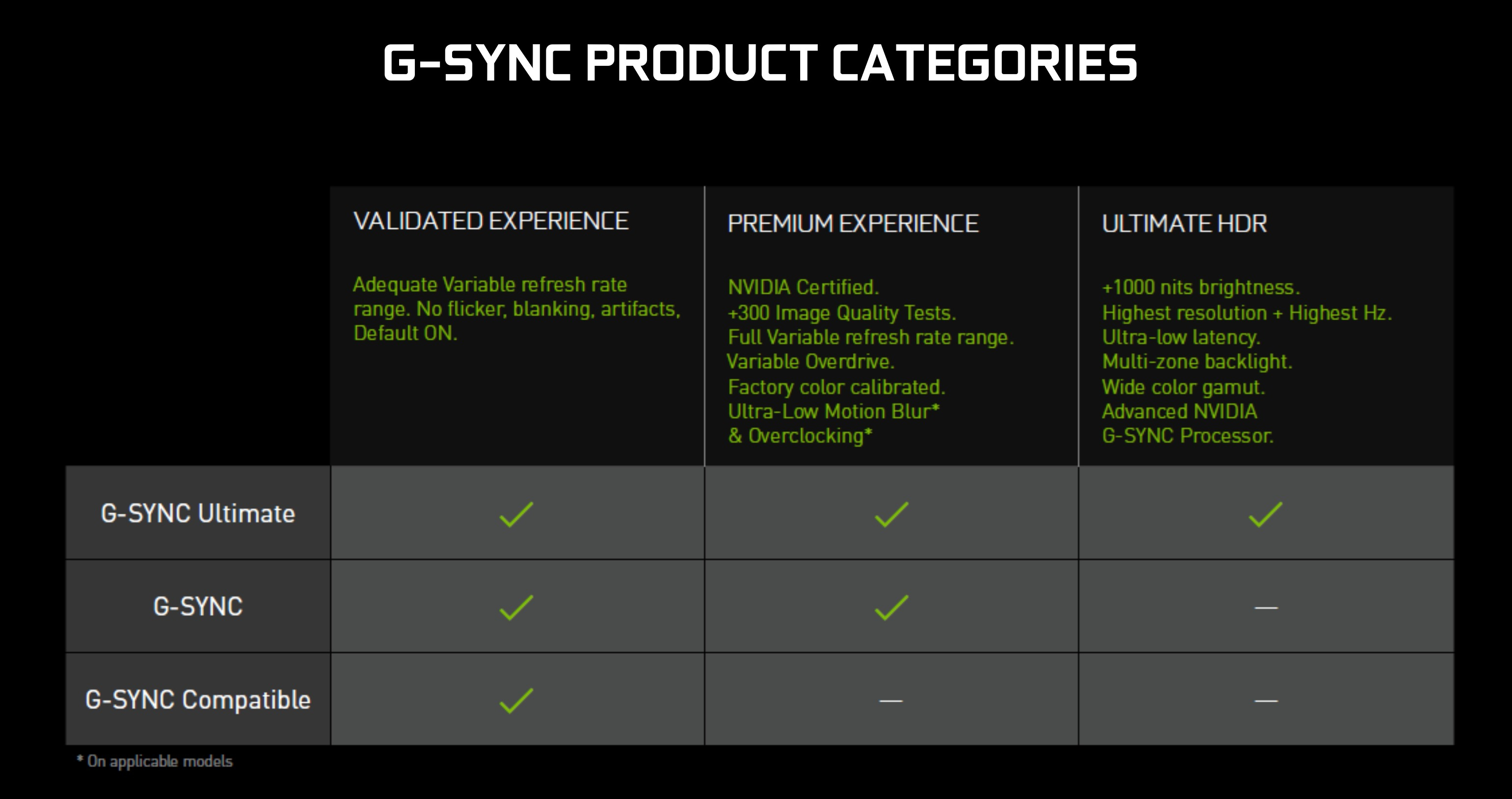 That’s because 24fps divides evenly (5 times) into a 120Hz refresh rate.
That’s because 24fps divides evenly (5 times) into a 120Hz refresh rate.  If you’re a PC gamer who wants to play on the big screen, you’ll also reap the benefits from a 120Hz TV, as high frame-rate games have been available in that ecosystem for quite some time.
If you’re a PC gamer who wants to play on the big screen, you’ll also reap the benefits from a 120Hz TV, as high frame-rate games have been available in that ecosystem for quite some time. If you’re more of a casual viewer and sports broadcasts aren’t incredibly important to you and your family, there are plenty of budget-friendly 60Hz TVs that will fit your lifestyle perfectly.
If you’re more of a casual viewer and sports broadcasts aren’t incredibly important to you and your family, there are plenty of budget-friendly 60Hz TVs that will fit your lifestyle perfectly.
 Most high-end TVs have a 120Hz refresh rate, but it doesn’t mean they’re inherently better at motion handling either. The response time determines how good motion looks; a quick response time means that motion looks clear, while a TV with a slow response time leads to motion blur. Response time and refresh rate are indirectly related as a 120Hz panel is expected to have a better response time than a 60Hz panel, but it’s not a guarantee.
Most high-end TVs have a 120Hz refresh rate, but it doesn’t mean they’re inherently better at motion handling either. The response time determines how good motion looks; a quick response time means that motion looks clear, while a TV with a slow response time leads to motion blur. Response time and refresh rate are indirectly related as a 120Hz panel is expected to have a better response time than a 60Hz panel, but it’s not a guarantee.
 This means that the TV’s refresh rate remains at 60Hz, and motion won’t appear smooth, which is an effect called judder. A 60Hz TV has trouble removing 24 fps judder because 60 isn’t a multiple of 24. To display this type of content, a technique known as a “3:2 pulldown” is used. Basically, 12 of the 24 frames repeat three times, while the other 12 repeat twice, totaling 60 frames. Not everybody notices this, but it causes some scenes, notably panning shots, to appear juddery. However, 120Hz TVs have an advantage here because they can simply display each frame five times since 120 is a multiple of 24.
This means that the TV’s refresh rate remains at 60Hz, and motion won’t appear smooth, which is an effect called judder. A 60Hz TV has trouble removing 24 fps judder because 60 isn’t a multiple of 24. To display this type of content, a technique known as a “3:2 pulldown” is used. Basically, 12 of the 24 frames repeat three times, while the other 12 repeat twice, totaling 60 frames. Not everybody notices this, but it causes some scenes, notably panning shots, to appear juddery. However, 120Hz TVs have an advantage here because they can simply display each frame five times since 120 is a multiple of 24. As you can see in the picture below, content looks much smoother at 120 fps than at 60 fps on a 120Hz TV.
As you can see in the picture below, content looks much smoother at 120 fps than at 60 fps on a 120Hz TV.

 A company like Samsung uses the term ‘Motion Rate’; the Motion Rate on a 60Hz TV is 120, while a 120Hz model has a Motion Rate of 240; they effectively double the refresh rate to come up with this number, and there’s no real explanation as to why it’s marketed like that. LG uses ‘TruMotion’, Vizio has ‘Effective Refresh Rate’, and Sony has two terms: ‘MotionFlow XR’ and ‘X-Motion Clarity’. These marketing numbers don’t really mean anything, and you need to check the TV’s specs to find the real refresh rate.
A company like Samsung uses the term ‘Motion Rate’; the Motion Rate on a 60Hz TV is 120, while a 120Hz model has a Motion Rate of 240; they effectively double the refresh rate to come up with this number, and there’s no real explanation as to why it’s marketed like that. LG uses ‘TruMotion’, Vizio has ‘Effective Refresh Rate’, and Sony has two terms: ‘MotionFlow XR’ and ‘X-Motion Clarity’. These marketing numbers don’t really mean anything, and you need to check the TV’s specs to find the real refresh rate. However, 120Hz TVs with HDMI 2.1 support are beneficial to gamers as they allow for higher frame rates.
However, 120Hz TVs with HDMI 2.1 support are beneficial to gamers as they allow for higher frame rates. Manufacturers achieve this with the help of special software solutions. The most popular is to insert an intermediate frame between the two main ones.
Manufacturers achieve this with the help of special software solutions. The most popular is to insert an intermediate frame between the two main ones.  The Hz value indicates how many frames per second the panel is capable of displaying.
The Hz value indicates how many frames per second the panel is capable of displaying. 
 Complements the list of shortcomings tangible energy consumption and frequent failures when detecting removable modules. Such a TV may not see the hard drive or flash drive, headset and similar connected devices.
Complements the list of shortcomings tangible energy consumption and frequent failures when detecting removable modules. Such a TV may not see the hard drive or flash drive, headset and similar connected devices.  Thus, the quality did not increase, but the sales of digital electronics went very well. Modern LCD TVs of well-known brands correspond to the parameters stated in the passport, and there is no doubt about it. It is more important to take care of the availability of the necessary cables that allow you to transmit digitized channels of satellite or cable TV.
Thus, the quality did not increase, but the sales of digital electronics went very well. Modern LCD TVs of well-known brands correspond to the parameters stated in the passport, and there is no doubt about it. It is more important to take care of the availability of the necessary cables that allow you to transmit digitized channels of satellite or cable TV. 


 This will be the drain port. Remove the plug.
This will be the drain port. Remove the plug. 
 Record hose installation or replacement dates for future reference. Periodically inspect and replace hoses if bulges, kinks, cuts, wear or leaks are found.
Record hose installation or replacement dates for future reference. Periodically inspect and replace hoses if bulges, kinks, cuts, wear or leaks are found.
 It is not recommended to leave it under your washer after installation as it could cause vibration or noises.
It is not recommended to leave it under your washer after installation as it could cause vibration or noises.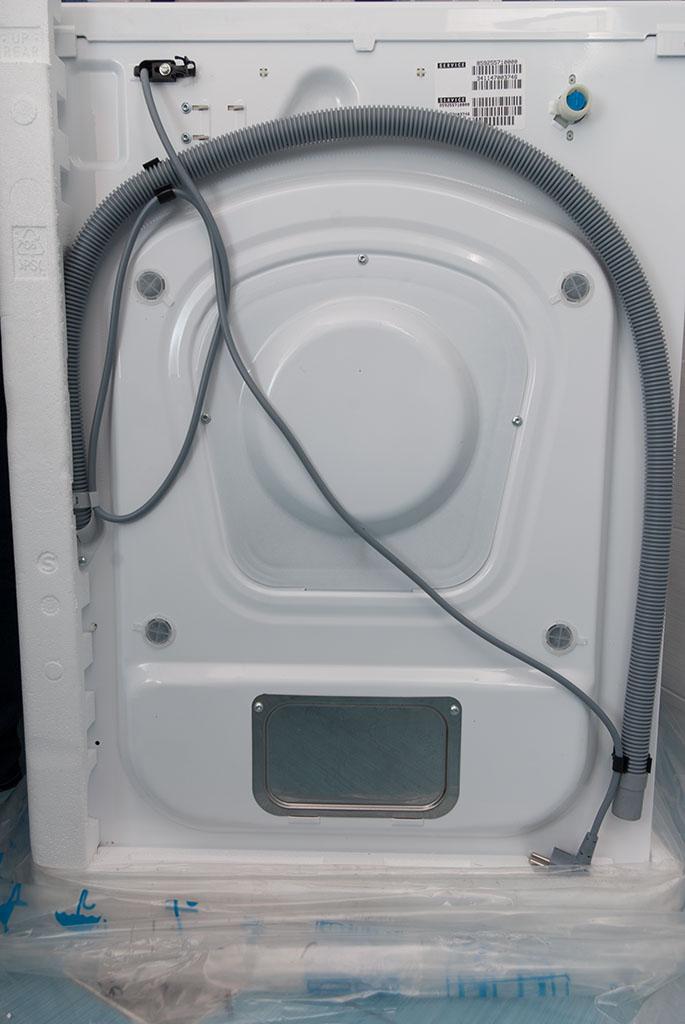


 It’s also recommended to have at least one other adult available to help lift the washer onto an appliance cart and balance the washer while it’s moved. Additionally, you need to wear gloves to protect your hands and help you grip the machine, as well as steel-toed footwear to keep your feet safe from being crushed by the washer if it gets dropped or slips off the appliance cart.
It’s also recommended to have at least one other adult available to help lift the washer onto an appliance cart and balance the washer while it’s moved. Additionally, you need to wear gloves to protect your hands and help you grip the machine, as well as steel-toed footwear to keep your feet safe from being crushed by the washer if it gets dropped or slips off the appliance cart. Most electric dryers rely on 240V power, while washing machines need a standard 120V outlet. Gas dryers must be hooked up by a licensed professional.
Most electric dryers rely on 240V power, while washing machines need a standard 120V outlet. Gas dryers must be hooked up by a licensed professional.

 Have a second adult help to move the heavy appliance in order to avoid scraping or scratching the floor. At this point in the installation process, you will need to keep the washer pulled out from the wall in order to access the back of the machine. You should always familiarize yourself by reading the installation manual.
Have a second adult help to move the heavy appliance in order to avoid scraping or scratching the floor. At this point in the installation process, you will need to keep the washer pulled out from the wall in order to access the back of the machine. You should always familiarize yourself by reading the installation manual.


 You can find out if the washer is level by placing a level on the top of the machine. Use each of the leveling feet to increase or decrease the height of one corner at a time until the machine is level. Remember to check if the washer is level from both left to right and from front to back. Otherwise, you may find that the washer is leaning forward too much, causing the drum to hit the sides of the washer during a heavy wash cycle or a spin cycle.
You can find out if the washer is level by placing a level on the top of the machine. Use each of the leveling feet to increase or decrease the height of one corner at a time until the machine is level. Remember to check if the washer is level from both left to right and from front to back. Otherwise, you may find that the washer is leaning forward too much, causing the drum to hit the sides of the washer during a heavy wash cycle or a spin cycle. Worn out hoses can also be the cause of a leak, so if any of the hoses appear to be in poor condition, it’s recommended to replace them.
Worn out hoses can also be the cause of a leak, so if any of the hoses appear to be in poor condition, it’s recommended to replace them.
 Close the holes with plastic plugs that come with the washer. Do not throw away the fasteners – they will come in handy in case of a move.
Close the holes with plastic plugs that come with the washer. Do not throw away the fasteners – they will come in handy in case of a move.  If desired, you can install the SM in the hallway, if there is enough space and there is a socket. Before installation, it is very important to think over everything, weigh all the pros and cons.
If desired, you can install the SM in the hallway, if there is enough space and there is a socket. Before installation, it is very important to think over everything, weigh all the pros and cons. 

 The machine must be installed on a perfectly flat floor. If you find any irregularities, use a rubber mat – put it under the machine. The mat is excellent at absorbing vibrations. In no case do not use wooden linings or linoleum cutouts – they only temporarily eliminate the problem. Here’s a way to make sure the washer is installed correctly and at the right level: put your weight on each corner of the top cover. If none of them give way down, the machine is level.
The machine must be installed on a perfectly flat floor. If you find any irregularities, use a rubber mat – put it under the machine. The mat is excellent at absorbing vibrations. In no case do not use wooden linings or linoleum cutouts – they only temporarily eliminate the problem. Here’s a way to make sure the washer is installed correctly and at the right level: put your weight on each corner of the top cover. If none of them give way down, the machine is level. 
 Good luck and enjoy using it.
Good luck and enjoy using it. 
 But before it can begin to perform its function, it needs to be properly installed. It is advisable to carefully read the instructions that come with any equipment and study the nuances in order to avoid errors during installation.
But before it can begin to perform its function, it needs to be properly installed. It is advisable to carefully read the instructions that come with any equipment and study the nuances in order to avoid errors during installation. 




 The Switch player in your life will probably need to store more games at once, making the 128 GB SanDisk microSDXC Card a welcome gift, even if it’s not the flashiest of the accessories we recommend. It’s speedy when saving or loading games, and it’s one of the most cost-effective cards you can buy. If you’re feeling generous, SanDisk also sells a 256 GB version for double the storage.
The Switch player in your life will probably need to store more games at once, making the 128 GB SanDisk microSDXC Card a welcome gift, even if it’s not the flashiest of the accessories we recommend. It’s speedy when saving or loading games, and it’s one of the most cost-effective cards you can buy. If you’re feeling generous, SanDisk also sells a 256 GB version for double the storage. It’s a great option for anyone who is always playing games on their phone. It features all the typical buttons you can find on any modern controller, as well as buttons for recording game play and launching the free Backbone app, which offers a unified way to open all your mobile games. The Backbone controller connects to iPhones through the Lightning port, so there’s no need to connect to Bluetooth, though the iPhone 13 Pro and iPhone 13 Pro Max do require a special adapter, which ships free when you order (or, if you have a 3D printer, you can create it at home).
It’s a great option for anyone who is always playing games on their phone. It features all the typical buttons you can find on any modern controller, as well as buttons for recording game play and launching the free Backbone app, which offers a unified way to open all your mobile games. The Backbone controller connects to iPhones through the Lightning port, so there’s no need to connect to Bluetooth, though the iPhone 13 Pro and iPhone 13 Pro Max do require a special adapter, which ships free when you order (or, if you have a 3D printer, you can create it at home).
 We also like its vibrant backlights, which your gift recipient can customize with simple software.
We also like its vibrant backlights, which your gift recipient can customize with simple software. The website’s design tool is easy to use and a ton of fun, too.
The website’s design tool is easy to use and a ton of fun, too. It’s one of the best arcade beat-’em-up games you can play right now, and it features seamless co-op gameplay for those who like to team up with friends.
It’s one of the best arcade beat-’em-up games you can play right now, and it features seamless co-op gameplay for those who like to team up with friends. The most recent installment, Splatoon 3, is the most refined and expansive version yet, with more solo and cooperative options than in both of the games before it.
The most recent installment, Splatoon 3, is the most refined and expansive version yet, with more solo and cooperative options than in both of the games before it. (Yes, it’s like Netflix for video games.) This has been a big year for Game Pass proving its worth, with huge releases including Psychonauts 2, Hades, Back 4 Blood, Forza Horizon 5, and Halo Infinite all hitting the service since August. Game Pass Ultimate also allows players to stream more than 100 games to their Android phones or tablets, and it includes an EA Play subscription. And if it turns out that your gift recipient already has a subscription, they can add the gifted months to their current account.
(Yes, it’s like Netflix for video games.) This has been a big year for Game Pass proving its worth, with huge releases including Psychonauts 2, Hades, Back 4 Blood, Forza Horizon 5, and Halo Infinite all hitting the service since August. Game Pass Ultimate also allows players to stream more than 100 games to their Android phones or tablets, and it includes an EA Play subscription. And if it turns out that your gift recipient already has a subscription, they can add the gifted months to their current account. And if your gift recipient already has a subscription, they can add your gift to it. You can also give the subscription in one-month and 12-month increments.
And if your gift recipient already has a subscription, they can add your gift to it. You can also give the subscription in one-month and 12-month increments. This particular pressing of the music from Pokémon Gold & Silver doesn’t feature the direct soundtrack from the games but rather a stunning orchestral arrangement. The half-black, half-white vinyl and the elegant outer sleeve are pretty enough to double as a piece of artwork for people who like to display their records, but Turntable Lab also has a lot of other fun and colorful options to choose from— some of our favorites include the Doom soundtrack pressed on blood-red vinyl and the marbled purple and orange pressings of the Ratchet & Clank: Rift Apart soundtrack.
This particular pressing of the music from Pokémon Gold & Silver doesn’t feature the direct soundtrack from the games but rather a stunning orchestral arrangement. The half-black, half-white vinyl and the elegant outer sleeve are pretty enough to double as a piece of artwork for people who like to display their records, but Turntable Lab also has a lot of other fun and colorful options to choose from— some of our favorites include the Doom soundtrack pressed on blood-red vinyl and the marbled purple and orange pressings of the Ratchet & Clank: Rift Apart soundtrack. It also includes cloth to sew on, embroidery needles, and all the matching threads necessary to bring the pixelated patterns to life.
It also includes cloth to sew on, embroidery needles, and all the matching threads necessary to bring the pixelated patterns to life. A quick warning: The existing version does not work with Nintendo’s new Switch OLED Model (and it doesn’t work with the Switch Lite, either).
A quick warning: The existing version does not work with Nintendo’s new Switch OLED Model (and it doesn’t work with the Switch Lite, either). With a little technical know-how and about an hour’s worth of time, you can turn the Raspberry Pi into a capable little game console, a project that’s perfect for DIY-ers, tinkerers, or anyone who doesn’t mind futzing about with different settings.
With a little technical know-how and about an hour’s worth of time, you can turn the Raspberry Pi into a capable little game console, a project that’s perfect for DIY-ers, tinkerers, or anyone who doesn’t mind futzing about with different settings. Some projects are more complex than others, but one of the easiest tasks is to do a battery swap for an old controller (Switch Pro, DualShock 4, DualShock 3), which can extend the life of the controller so you don’t have to buy a new one.
Some projects are more complex than others, but one of the easiest tasks is to do a battery swap for an old controller (Switch Pro, DualShock 4, DualShock 3), which can extend the life of the controller so you don’t have to buy a new one. She used to review video games full-time, and she’s also a big fan of mezcal. If you get enough in her, she may just admit that she still plays The Sims … a lot.
She used to review video games full-time, and she’s also a big fan of mezcal. If you get enough in her, she may just admit that she still plays The Sims … a lot.
 1 Sound Video Gaming Floor Chair
1 Sound Video Gaming Floor Chair  Here are 20 gifts that will put a smile on any gamer’s face this year! We looked through our favorite game websites and found some of the best items out there – from headsets to controllers. These gifts will make anyone happy, especially if they love gaming as much as we do!
Here are 20 gifts that will put a smile on any gamer’s face this year! We looked through our favorite game websites and found some of the best items out there – from headsets to controllers. These gifts will make anyone happy, especially if they love gaming as much as we do! And don’t worry about carrying your snacks around because there are even cupholders built-in and located at just the right angle so you don’t spill anything on your keyboard while digitally drifting corners. This is a gift for a gamer even Santa would be jealous of giving next year!
And don’t worry about carrying your snacks around because there are even cupholders built-in and located at just the right angle so you don’t spill anything on your keyboard while digitally drifting corners. This is a gift for a gamer even Santa would be jealous of giving next year! Start from Space Invaders all the way to Portal below, spot a game that catches your eye? Get at it! They’ll keep you updated on new releases with their newsletter and social media feeds.
Start from Space Invaders all the way to Portal below, spot a game that catches your eye? Get at it! They’ll keep you updated on new releases with their newsletter and social media feeds. The Couchmaster CYCON² Black Edition is the perfect gift for gamers who love to play at home on the couch. With support for up to six USB devices and your gaming essentials all on hand in one place–plus charging capabilities–you’ll never have to stop playing because of spilled drinks again!
The Couchmaster CYCON² Black Edition is the perfect gift for gamers who love to play at home on the couch. With support for up to six USB devices and your gaming essentials all on hand in one place–plus charging capabilities–you’ll never have to stop playing because of spilled drinks again! This device is packed with 200 retro games including Pac-Man, Asteroids, and Centipede among others. The controls are standard so you can use the joystick-like you’re on a real arcade machine or classic console controller to maneuver your way through game levels. And for those fast-paced moments, don’t worry about buttons, these ones work just like they would in any cabinet. You even have three exciting sound modes – mono speaker mode allows gaming audio without headphones; stereo mode lets gamers hear
This device is packed with 200 retro games including Pac-Man, Asteroids, and Centipede among others. The controls are standard so you can use the joystick-like you’re on a real arcade machine or classic console controller to maneuver your way through game levels. And for those fast-paced moments, don’t worry about buttons, these ones work just like they would in any cabinet. You even have three exciting sound modes – mono speaker mode allows gaming audio without headphones; stereo mode lets gamers hear He just happened to be born in 1982! Miniature mini arcade packed with games from the ’80s and ’90s. Portable and easy-to-use; a joystick for fast maneuverability, standard A and B buttons for super fun gameplay, start button to pause – this little guy has everything you need! Great for small spaces. Comes fully stocked with 200 retro titles including Pac Man, Tetris, Galaxian, Arkanoid Doh It Again etcetera. Miniature arcade fits anywhere: on tabletops or desk tops perfect match for kid’s rooms as well as teenager rooms. Built-in audio speakers included all that’s needed is four AA batteries (or power cord).
He just happened to be born in 1982! Miniature mini arcade packed with games from the ’80s and ’90s. Portable and easy-to-use; a joystick for fast maneuverability, standard A and B buttons for super fun gameplay, start button to pause – this little guy has everything you need! Great for small spaces. Comes fully stocked with 200 retro titles including Pac Man, Tetris, Galaxian, Arkanoid Doh It Again etcetera. Miniature arcade fits anywhere: on tabletops or desk tops perfect match for kid’s rooms as well as teenager rooms. Built-in audio speakers included all that’s needed is four AA batteries (or power cord).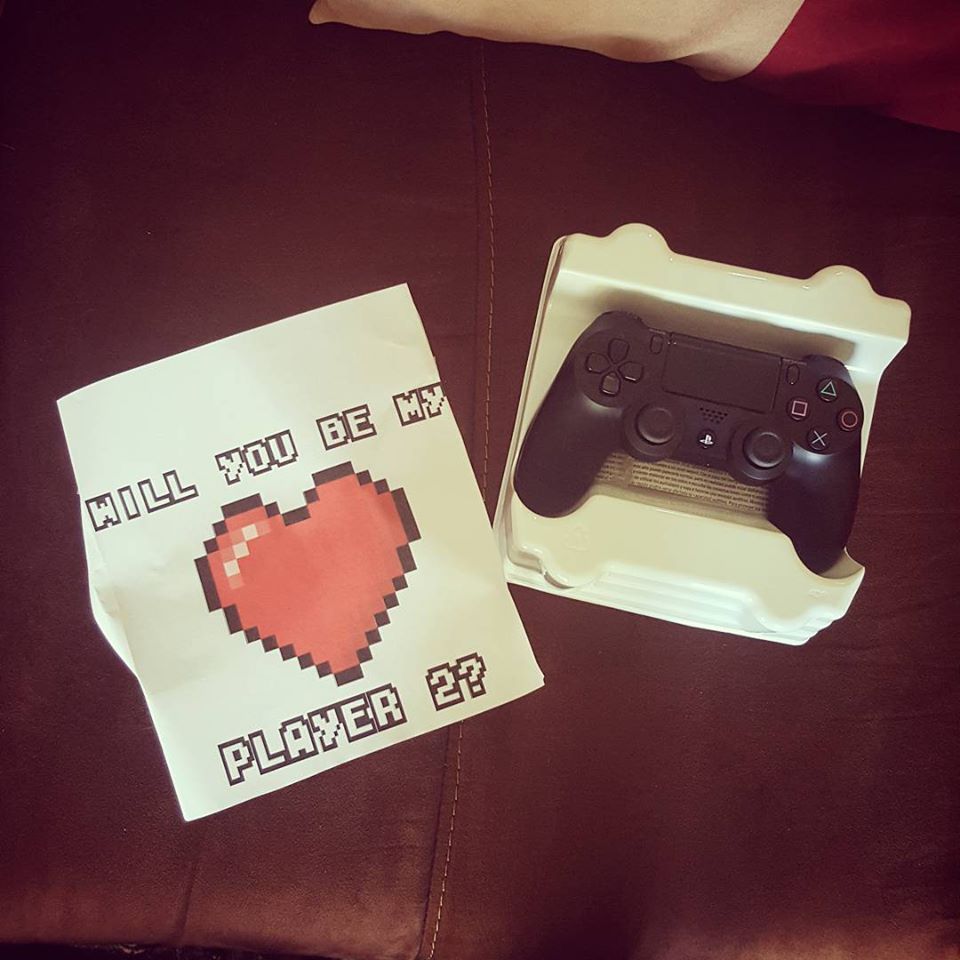 With over 2,000 high-quality components including studs made from molded plastic bricks and interactive 1980s-style instruction sheet video onscreen, it’s perfect for gamers recreating treasured memories for themselves or someone else.
With over 2,000 high-quality components including studs made from molded plastic bricks and interactive 1980s-style instruction sheet video onscreen, it’s perfect for gamers recreating treasured memories for themselves or someone else. Whether they play on their PlayStation 4 or Xbox One, this chair will take them to an immersive experience like no other. No need to go find a couch and use pillows — just plop down on the all-purpose plush comfort of their new favorite gaming chair, relax, enjoy some music (or video) with two forward-facing speakers with a powerful subwoofer for unmatched sound and a low rumble that intensifies as you’re playing games or watching movies and TV!
Whether they play on their PlayStation 4 or Xbox One, this chair will take them to an immersive experience like no other. No need to go find a couch and use pillows — just plop down on the all-purpose plush comfort of their new favorite gaming chair, relax, enjoy some music (or video) with two forward-facing speakers with a powerful subwoofer for unmatched sound and a low rumble that intensifies as you’re playing games or watching movies and TV! With this chair at your command, it is certain that friends won’t know what hit them!
With this chair at your command, it is certain that friends won’t know what hit them! From hard-hitting action RPGs like RuneSaga and Apex Construct to interactive horror experiences such as The Exorcist: Legion VR, Quest 2 lets you explore the big world around you or venture down into your own imagination. Rolland Thunderjaw’s course vaults forward with new twists and turns as players glide past rocks and make lightning-quick jumps across chasms without breaking stride. Push your skills, find unity with nature at breathtaking heights or just put on some ukulele tunes in Quill18’s virtual home.
From hard-hitting action RPGs like RuneSaga and Apex Construct to interactive horror experiences such as The Exorcist: Legion VR, Quest 2 lets you explore the big world around you or venture down into your own imagination. Rolland Thunderjaw’s course vaults forward with new twists and turns as players glide past rocks and make lightning-quick jumps across chasms without breaking stride. Push your skills, find unity with nature at breathtaking heights or just put on some ukulele tunes in Quill18’s virtual home. You’ll find these great, chic glasses just what you’ve been looking for – and they look good on both women AND men.
You’ll find these great, chic glasses just what you’ve been looking for – and they look good on both women AND men.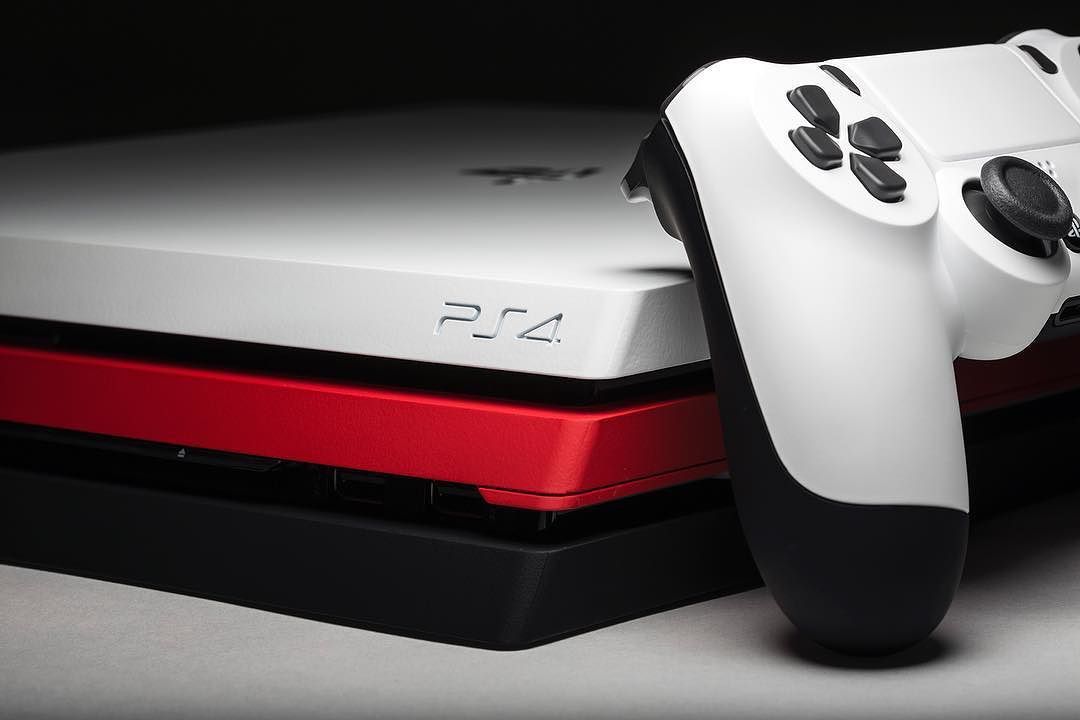 It’s the first of its kind to bring console-level controls running on iOS devices, complete with an analog stick and face buttons. Designed for those who want access to their favorite mobile titles wherever they go, this has been one long time coming – put down that potato peeler!
It’s the first of its kind to bring console-level controls running on iOS devices, complete with an analog stick and face buttons. Designed for those who want access to their favorite mobile titles wherever they go, this has been one long time coming – put down that potato peeler! Equipped with 3x faster than traditional mechanical switches in an all-new Razer optical sensor design for tracking 20K at speed without sacrificing accuracy or reliability.
Equipped with 3x faster than traditional mechanical switches in an all-new Razer optical sensor design for tracking 20K at speed without sacrificing accuracy or reliability. Rather than give in to these giant obstacles to happiness head-on, there’s this amazing contraption from Havit® that lets you not only store your earphones standing on their own with ease but also keep them tangle-free!
Rather than give in to these giant obstacles to happiness head-on, there’s this amazing contraption from Havit® that lets you not only store your earphones standing on their own with ease but also keep them tangle-free!
 The lettering is rubberized so you can wear them on slippery floors. They’re comfortable and warm, but never make your feet hot or sweaty while playing video games!
The lettering is rubberized so you can wear them on slippery floors. They’re comfortable and warm, but never make your feet hot or sweaty while playing video games! You’ll be able to focus better thanks to a soothing massage, all while feeling less of that tightness at the end of a rigorous game of Counter-Strike. The heating function also helps with muscle relief – this cools off any area around it after those long hours spent in front of the screen. With German technology and design, these massages are so strong they can even combat workplace fatigue during long workdays!
You’ll be able to focus better thanks to a soothing massage, all while feeling less of that tightness at the end of a rigorous game of Counter-Strike. The heating function also helps with muscle relief – this cools off any area around it after those long hours spent in front of the screen. With German technology and design, these massages are so strong they can even combat workplace fatigue during long workdays!
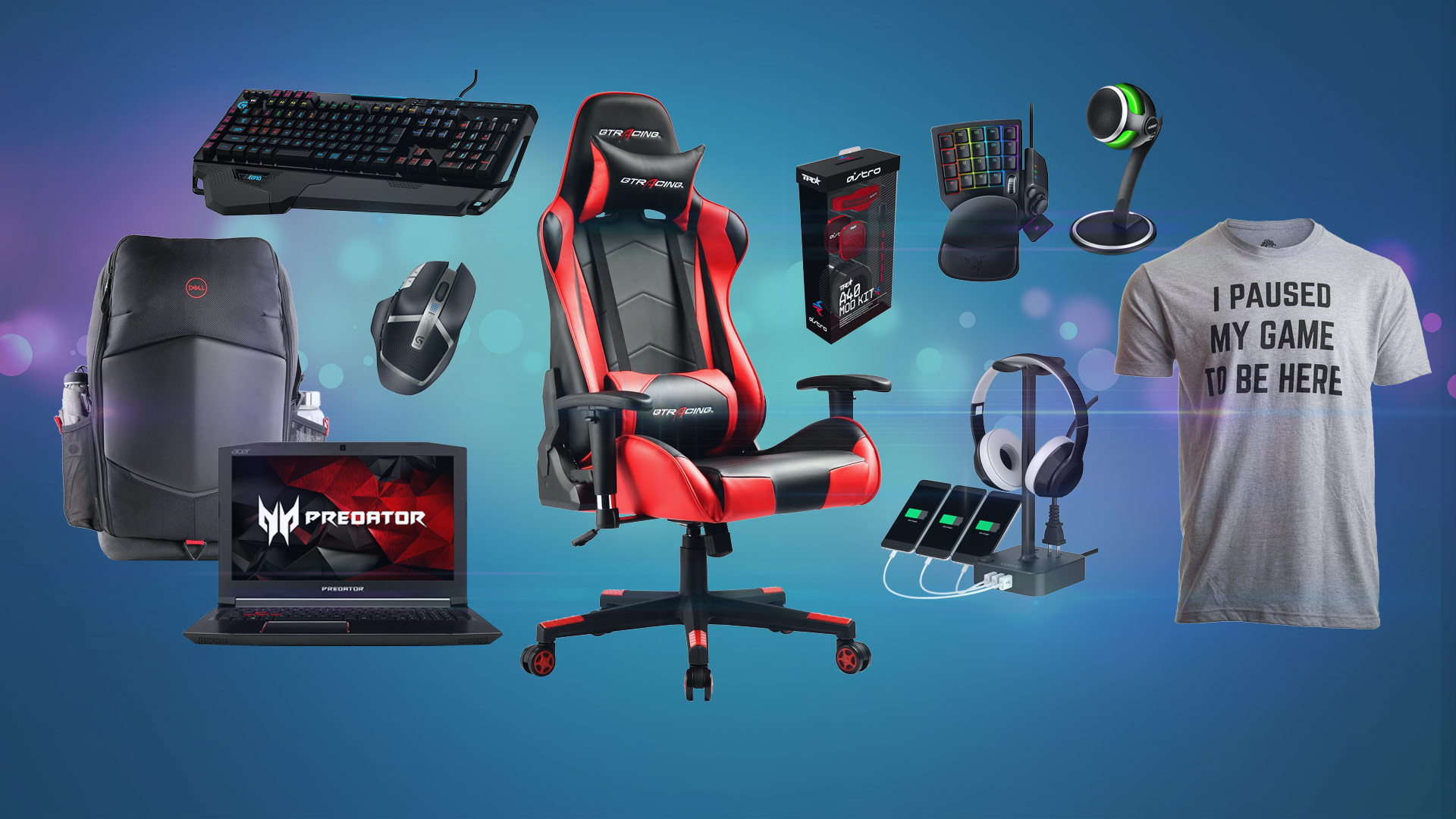 It helps you enjoy entertainment anywhere from your daily needs to thirst for hardcore games. You can now take on all challengers – even those online – while getting the experience you want.
It helps you enjoy entertainment anywhere from your daily needs to thirst for hardcore games. You can now take on all challengers – even those online – while getting the experience you want. The new HORI Real Arcade Pro N Hayabusa Arcade Fight Stick for PlayStation 4 is officially licensed by SIEA and designed to work with PlayStation 4, PlayStation 3, and PC systems. Includes turbo functions, touch panel, button assignment, and more- now you’re playing like a pro!
The new HORI Real Arcade Pro N Hayabusa Arcade Fight Stick for PlayStation 4 is officially licensed by SIEA and designed to work with PlayStation 4, PlayStation 3, and PC systems. Includes turbo functions, touch panel, button assignment, and more- now you’re playing like a pro!
 System requirements should also be taken into account.
System requirements should also be taken into account.  The player will engage in cinematic battles using the very lightsabers and the Force, which are designed to convey the full intensity of the exciting battles from the Star Wars films.
The player will engage in cinematic battles using the very lightsabers and the Force, which are designed to convey the full intensity of the exciting battles from the Star Wars films. 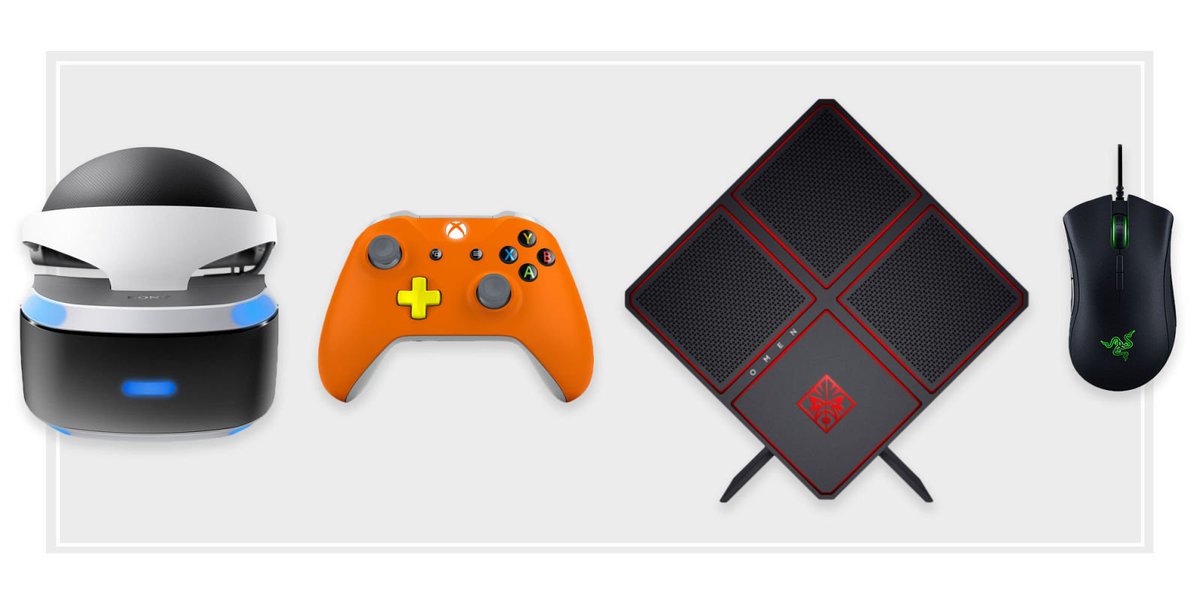

 No one wants to receive a souvenir with the symbols of their enemy as a gift!
No one wants to receive a souvenir with the symbols of their enemy as a gift! 
 Such a gift is not only very cool, but also very tasty!
Such a gift is not only very cool, but also very tasty! 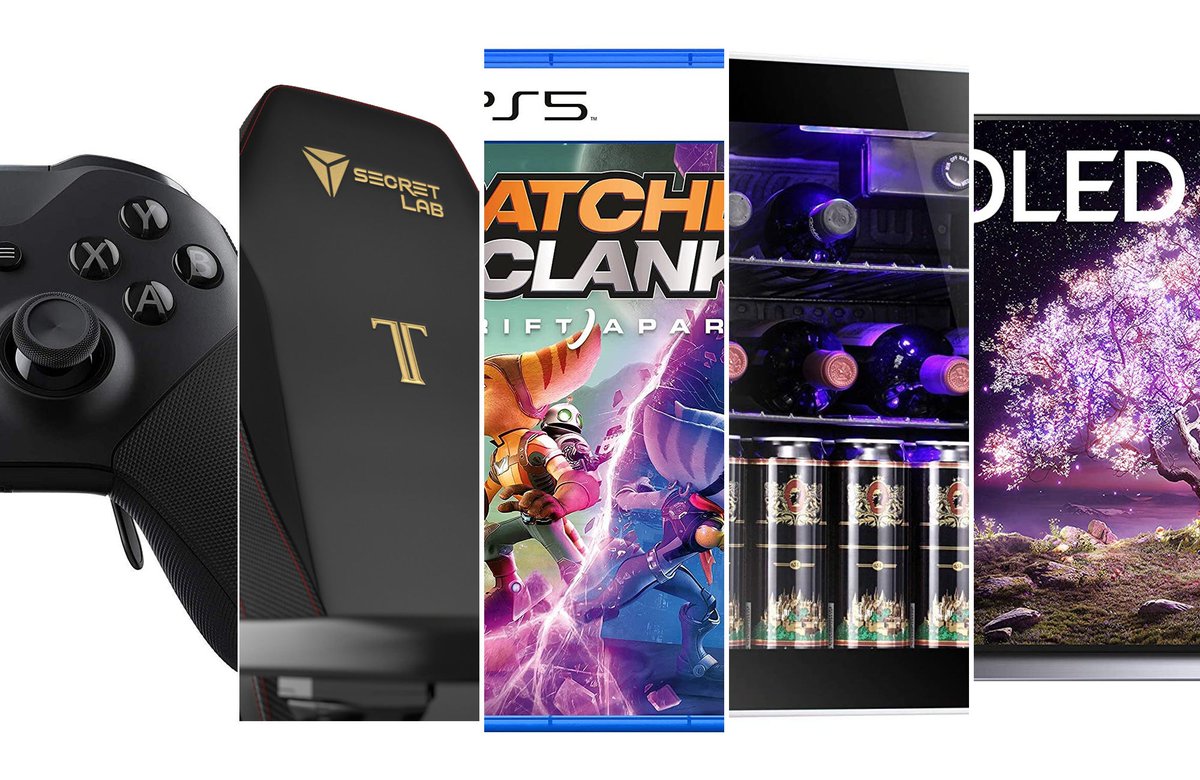

 There, a responsive consultant will paint for you all sorts of charms of at least ten discs and advise what to buy.
There, a responsive consultant will paint for you all sorts of charms of at least ten discs and advise what to buy.  In extreme cases, you can make them to order.
In extreme cases, you can make them to order.  Better arrange a joint trip to the store, let him choose or write in the comments, I will help you.
Better arrange a joint trip to the store, let him choose or write in the comments, I will help you.  A beautiful and original gift is not only necessary to buy in a store, show your imagination and you will succeed.
A beautiful and original gift is not only necessary to buy in a store, show your imagination and you will succeed. 

 The price isn’t too high, particularly compared to some models on this list, and it still performs admirably across the essential features. The 3.5-hour battery life should get you through most movies, as long as you aren’t embarking on a Synder Cut Justice League marathon. The sound quality is surprisingly impressive, thanks to the dual 10W audio drivers. All that’s packed into a decidedly compact, portable projector with a convenient handle for maximum portability.
The price isn’t too high, particularly compared to some models on this list, and it still performs admirably across the essential features. The 3.5-hour battery life should get you through most movies, as long as you aren’t embarking on a Synder Cut Justice League marathon. The sound quality is surprisingly impressive, thanks to the dual 10W audio drivers. All that’s packed into a decidedly compact, portable projector with a convenient handle for maximum portability. This Android-powered projector brings you high resolution, with a crystal clear picture, crisp colors, and significantly noticeable details.
This Android-powered projector brings you high resolution, with a crystal clear picture, crisp colors, and significantly noticeable details.  The resolution is high, the colors are crisp, and the details are actually noticeable, even without the optimal lighting conditions. The picture adjustment is also quite impressive, automatically providing the best viewing experience without having to adjust settings on your own. Plus, with the Android TV 10 interface built-in, you can enjoy all that content without navigating an outdated operating system.
The resolution is high, the colors are crisp, and the details are actually noticeable, even without the optimal lighting conditions. The picture adjustment is also quite impressive, automatically providing the best viewing experience without having to adjust settings on your own. Plus, with the Android TV 10 interface built-in, you can enjoy all that content without navigating an outdated operating system. Doing away with a built-in interface, this mini projector puts the control into the hands of the user, allowing you to connect directly with your Android phone, laptop, gaming console, or other streaming devices. With 2600 lumens, you can watch all your favorite shows and movies in stunning clarity, even in well-lit rooms.
Doing away with a built-in interface, this mini projector puts the control into the hands of the user, allowing you to connect directly with your Android phone, laptop, gaming console, or other streaming devices. With 2600 lumens, you can watch all your favorite shows and movies in stunning clarity, even in well-lit rooms. That’s why we’ve included the AuKing Mini Projector, a more affordable alternative to the standard projector experience. This projector is a bit different, as it does not provide any built-in interface but instead works with your Android phone or other streaming devices, like a gaming console or laptop. This means you’ll have to use a lot of cords to get the job done, but you could do a lot worse for the price, particularly given the impressive brightness at 2600 lumens.
That’s why we’ve included the AuKing Mini Projector, a more affordable alternative to the standard projector experience. This projector is a bit different, as it does not provide any built-in interface but instead works with your Android phone or other streaming devices, like a gaming console or laptop. This means you’ll have to use a lot of cords to get the job done, but you could do a lot worse for the price, particularly given the impressive brightness at 2600 lumens.
 As a portable projector, the picture quality is extremely impressive, thanks to a higher resolution than most others on the list and HDR-level detail in the picture. Sure, 500 lumens isn’t necessarily worthy of a letter home, but it’s more than enough to manage in low-light situations. The cool, durable design is made to endure bumps, scraps, and even a splash here and there, which is always nice for portable projectors. And with an Android TV dongle included, you’re all set to get your content on without buying anything extra.
As a portable projector, the picture quality is extremely impressive, thanks to a higher resolution than most others on the list and HDR-level detail in the picture. Sure, 500 lumens isn’t necessarily worthy of a letter home, but it’s more than enough to manage in low-light situations. The cool, durable design is made to endure bumps, scraps, and even a splash here and there, which is always nice for portable projectors. And with an Android TV dongle included, you’re all set to get your content on without buying anything extra. Overall though, if you’ve got the money, the BenQ GS50 is a more than respectable option, boasting great picture quality in a portable projector, which is not easy to come by.
Overall though, if you’ve got the money, the BenQ GS50 is a more than respectable option, boasting great picture quality in a portable projector, which is not easy to come by. Compared to other projectors on this list that are a literal fraction of the price, the Xgimi Aura is certainly at the high end of the spectrum regarding cost. In fact, this projector is our honorary “if you won the lottery” pick because it was just too expensive to be considered the Premium Pick. Still, you very much get what you pay for with this device, offering unreal picture quality at 3840 x 2160(4K) resolution and HRD support. The short throw distance is perhaps the best feature, though, allowing you to place the projector directly beneath the wall for the easiest setup you can imagine.
Compared to other projectors on this list that are a literal fraction of the price, the Xgimi Aura is certainly at the high end of the spectrum regarding cost. In fact, this projector is our honorary “if you won the lottery” pick because it was just too expensive to be considered the Premium Pick. Still, you very much get what you pay for with this device, offering unreal picture quality at 3840 x 2160(4K) resolution and HRD support. The short throw distance is perhaps the best feature, though, allowing you to place the projector directly beneath the wall for the easiest setup you can imagine./cdn.vox-cdn.com/assets/3811867/5._ZTE_Projector_Hotspot.jpg) This lightweight, pocket-sized device may not be very feature-heavy, but it’s hard to complain about a justifiable price point. While the brightness is quite low at only 50 lumens, you can only use this device in dimly lit rooms for optimal viewing.
This lightweight, pocket-sized device may not be very feature-heavy, but it’s hard to complain about a justifiable price point. While the brightness is quite low at only 50 lumens, you can only use this device in dimly lit rooms for optimal viewing. It’s quite small, incredibly light, and comes with a handy tripod for simple setup in your home. Unfortunately, the specs aren’t too impressive, although, at this price point, you can’t be expecting the world. The brightness sits at only 50 ANSI lumens, which is not going to be favorable in anything but dark rooms and midnight viewings, so don’t expect that sunset movie marathon to look great with this projector.
It’s quite small, incredibly light, and comes with a handy tripod for simple setup in your home. Unfortunately, the specs aren’t too impressive, although, at this price point, you can’t be expecting the world. The brightness sits at only 50 ANSI lumens, which is not going to be favorable in anything but dark rooms and midnight viewings, so don’t expect that sunset movie marathon to look great with this projector. While Kodak is more famously known for its cameras, they’ve stepped into the projector game to bring you quality entertainment at a quality price. With Android 6.0 built-in, you get much of the programs and media you need, but the operating system is slightly outdated.
While Kodak is more famously known for its cameras, they’ve stepped into the projector game to bring you quality entertainment at a quality price. With Android 6.0 built-in, you get much of the programs and media you need, but the operating system is slightly outdated.  It’s definitely on the higher end of the budget options but has many features to warrant the extra cost. For one, it’s got Android built in, although it only runs Android 6, so you might feel like you’re time-traveling a bit when you use it. It also has a larger-than-most image size at 200 inches, but the video quality isn’t great at only 854 x 480 native resolution.
It’s definitely on the higher end of the budget options but has many features to warrant the extra cost. For one, it’s got Android built in, although it only runs Android 6, so you might feel like you’re time-traveling a bit when you use it. It also has a larger-than-most image size at 200 inches, but the video quality isn’t great at only 854 x 480 native resolution.

 That’s where Android projectors shine, allowing you to download your streaming services and other media apps right out of the box, so you can start watching in minutes. These projectors are easy to set up, connect directly to your Wi-Fi network, and allow you to enjoy your viewing experience to the fullest in your home.
That’s where Android projectors shine, allowing you to download your streaming services and other media apps right out of the box, so you can start watching in minutes. These projectors are easy to set up, connect directly to your Wi-Fi network, and allow you to enjoy your viewing experience to the fullest in your home. For a good value, the Auking Mini Projector is the way you’ll want to go, as it’s notably more affordable and still provides solid video quality and compatibility with your Android smartphone.
For a good value, the Auking Mini Projector is the way you’ll want to go, as it’s notably more affordable and still provides solid video quality and compatibility with your Android smartphone.
 Now, more than half a decade later, he covers everything from new devices and big conferences to small startups and business trends. In addition to freelancing for Android Police, Conor is the Lead Writer for Tech.co, a tech publication focused on helping small businesses grow and succeed. He’s worked with the likes of Forbes, WeWork, General Assembly, Chase Bank, Tech in Motion, and SXSW, among others, through Tech.co in service of making tech a bit more accessible. Conor also can’t properly pronounce the word “colloquially,” but honestly, who can?
Now, more than half a decade later, he covers everything from new devices and big conferences to small startups and business trends. In addition to freelancing for Android Police, Conor is the Lead Writer for Tech.co, a tech publication focused on helping small businesses grow and succeed. He’s worked with the likes of Forbes, WeWork, General Assembly, Chase Bank, Tech in Motion, and SXSW, among others, through Tech.co in service of making tech a bit more accessible. Conor also can’t properly pronounce the word “colloquially,” but honestly, who can?
 Meanwhile, it lets you control your Android device using the PC’s keyboard and mouse, making it convenient and efficient. Besides, it provides a reliable and high-quality mirroring experience, making it the best choice for Android phone projecting to a PC.
Meanwhile, it lets you control your Android device using the PC’s keyboard and mouse, making it convenient and efficient. Besides, it provides a reliable and high-quality mirroring experience, making it the best choice for Android phone projecting to a PC.
 Christie Virtual Remote
Christie Virtual Remote
 VueMagic Pro v2.4 is the most advanced mobile projector app for business professionals or educators. Powerful new features provide the ability to have full projector control from the convenience of your mobile device, as well as easy-to-use mobile presentation and annotation capability in a single app. New features in v2.4 include presentations and annotations snapshot and Android 5.0 support.
VueMagic Pro v2.4 is the most advanced mobile projector app for business professionals or educators. Powerful new features provide the ability to have full projector control from the convenience of your mobile device, as well as easy-to-use mobile presentation and annotation capability in a single app. New features in v2.4 include presentations and annotations snapshot and Android 5.0 support. The steps to make this projector have been explained in this projector app specifically. Follow the steps and you can easily make smartphone a projector, just like its name indicates.
The steps to make this projector have been explained in this projector app specifically. Follow the steps and you can easily make smartphone a projector, just like its name indicates.
 Projector apps are designed to be straightforward to set up and use. Most apps provide intuitive interfaces and step-by-step instructions for establishing connections between your Android device and the target display. However, the setup process may vary depending on your chosen app and the devices you are connecting.
Projector apps are designed to be straightforward to set up and use. Most apps provide intuitive interfaces and step-by-step instructions for establishing connections between your Android device and the target display. However, the setup process may vary depending on your chosen app and the devices you are connecting. They can take photos in RAW, scan the environment in 3D, measure distance and volume, and much more. Therefore, when I recently stumbled upon a video demonstrating an application on TikTok that can turn the camera of any smartphone into a real projector, I was not particularly surprised. The video was very convincing, however, I did not follow the link suggested by the author for security reasons, but went to Google Play to find it myself. It turned out that such software is of interest not only to me.
They can take photos in RAW, scan the environment in 3D, measure distance and volume, and much more. Therefore, when I recently stumbled upon a video demonstrating an application on TikTok that can turn the camera of any smartphone into a real projector, I was not particularly surprised. The video was very convincing, however, I did not follow the link suggested by the author for security reasons, but went to Google Play to find it myself. It turned out that such software is of interest not only to me.  Another thing is that for this, as it seemed to me, additional equipment was clearly needed, which is not found in modern smartphones. And so it happened.
Another thing is that for this, as it seemed to me, additional equipment was clearly needed, which is not found in modern smartphones. And so it happened.  But no, their creators directly promise that they will turn any smartphone into a projector. In fact, the app just starts showing ads.
But no, their creators directly promise that they will turn any smartphone into a projector. In fact, the app just starts showing ads.  They don’t really care how they do it. For them, the main thing is that they saw how someone is already doing it. And a large number of downloads from a fake application only assures them that they are right. As a result, developers get what they want, and users are left with nothing.
They don’t really care how they do it. For them, the main thing is that they saw how someone is already doing it. And a large number of downloads from a fake application only assures them that they are right. As a result, developers get what they want, and users are left with nothing.  All this forces users to install software manually via APK files or look for alternative appstores. And what to do with Google Play if you no longer need it? You can take no action, but then the store, which has become useless for some people, will continue to take up space in the internal memory and consume the resources of the mobile device. And you can try to figure out how to remove the Play Market, which is what I propose to do.
All this forces users to install software manually via APK files or look for alternative appstores. And what to do with Google Play if you no longer need it? You can take no action, but then the store, which has become useless for some people, will continue to take up space in the internal memory and consume the resources of the mobile device. And you can try to figure out how to remove the Play Market, which is what I propose to do. 
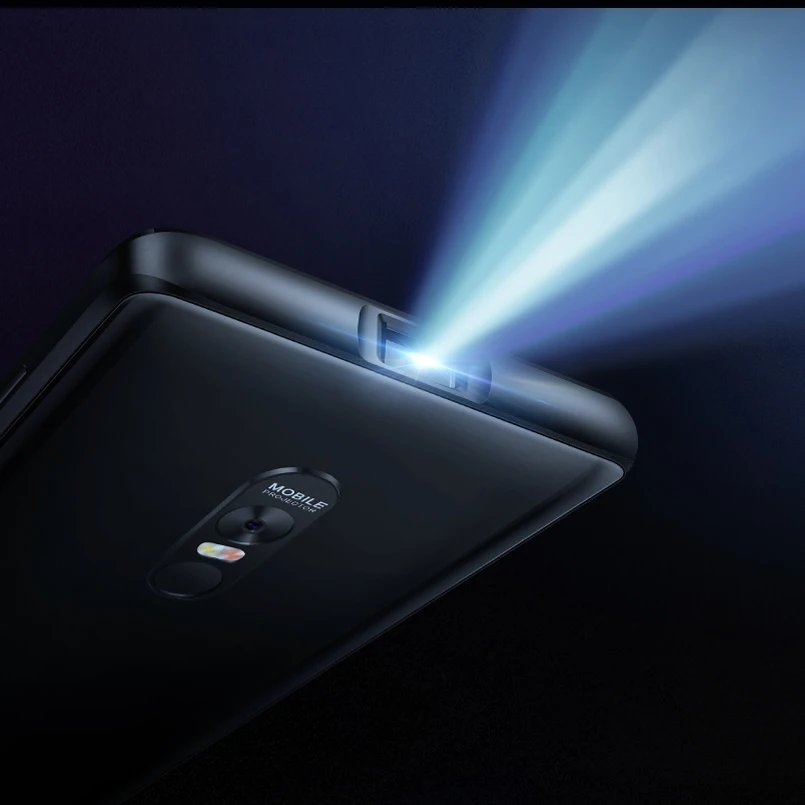 Typically, you need an app for this to work.
Typically, you need an app for this to work.  Check your specific projector’s model number on the manufacturer’s website to see if wireless streaming or mirroring support is available.
Check your specific projector’s model number on the manufacturer’s website to see if wireless streaming or mirroring support is available.  Some Android phones have a Mini-HDMI port, although this is quite rare in smartphones. You can use your phone’s Mini-HDMI port to easily connect to your project with a Mini-HDMI to HDMI cable.
Some Android phones have a Mini-HDMI port, although this is quite rare in smartphones. You can use your phone’s Mini-HDMI port to easily connect to your project with a Mini-HDMI to HDMI cable.  “
“
 Tiscali
Tiscali net
net Martinez
Martinez We will remember: what are the gaming bonuses? How were they born? Which of them are the most prestigious?
We will remember: what are the gaming bonuses? How were they born? Which of them are the most prestigious? 
 The abbreviation D.I.C.E. is a backronym for Design, Invent, Communicate, Have Fun. The DICE Awards recognize games, individuals and development teams that have contributed to the development of the global entertainment software industry.
The abbreviation D.I.C.E. is a backronym for Design, Invent, Communicate, Have Fun. The DICE Awards recognize games, individuals and development teams that have contributed to the development of the global entertainment software industry.  The awards were presented annually at the conference IGF (Independent Games Festival) Festival of Independent Games. By the way, this ceremony came to replace the Spotlight Awards, which were awarded from 1997 to 1999.
The awards were presented annually at the conference IGF (Independent Games Festival) Festival of Independent Games. By the way, this ceremony came to replace the Spotlight Awards, which were awarded from 1997 to 1999.  Still remember E3? So, our next award is essential for E3 and it’s the Game Critics Awards, being one of the most important awards in the gaming industry. The annual awards ceremony took place after E3, starting on 1998 years. The awards are given to products presented at E3, and they were awarded the title of “Best of E3” in their category. The nominees and winners of the award are selected by individual judges representing about 35 (as of 2011) major US media outlets.
Still remember E3? So, our next award is essential for E3 and it’s the Game Critics Awards, being one of the most important awards in the gaming industry. The annual awards ceremony took place after E3, starting on 1998 years. The awards are given to products presented at E3, and they were awarded the title of “Best of E3” in their category. The nominees and winners of the award are selected by individual judges representing about 35 (as of 2011) major US media outlets.  The BAFTA award or the British Academy of Film and Television Arts came to us from England too. A bit of history follows. From 16 April 1947 until 1976 the organization was called the British Academy of Film. Around 1958, the Television Producers Guild joined the academy and at the end of 1976 years old received its iconic name BAFTA.
The BAFTA award or the British Academy of Film and Television Arts came to us from England too. A bit of history follows. From 16 April 1947 until 1976 the organization was called the British Academy of Film. Around 1958, the Television Producers Guild joined the academy and at the end of 1976 years old received its iconic name BAFTA.  But after several ceremonies, the games turned out to be much more interesting to the public. And in 2006, only the BAFTA Games Awards remained. And in the same year, BAFTA equated the status of computer games with films and television and began to show the awards ceremony on television, which was first broadcast on October 5, 2006.
But after several ceremonies, the games turned out to be much more interesting to the public. And in 2006, only the BAFTA Games Awards remained. And in the same year, BAFTA equated the status of computer games with films and television and began to show the awards ceremony on television, which was first broadcast on October 5, 2006. 

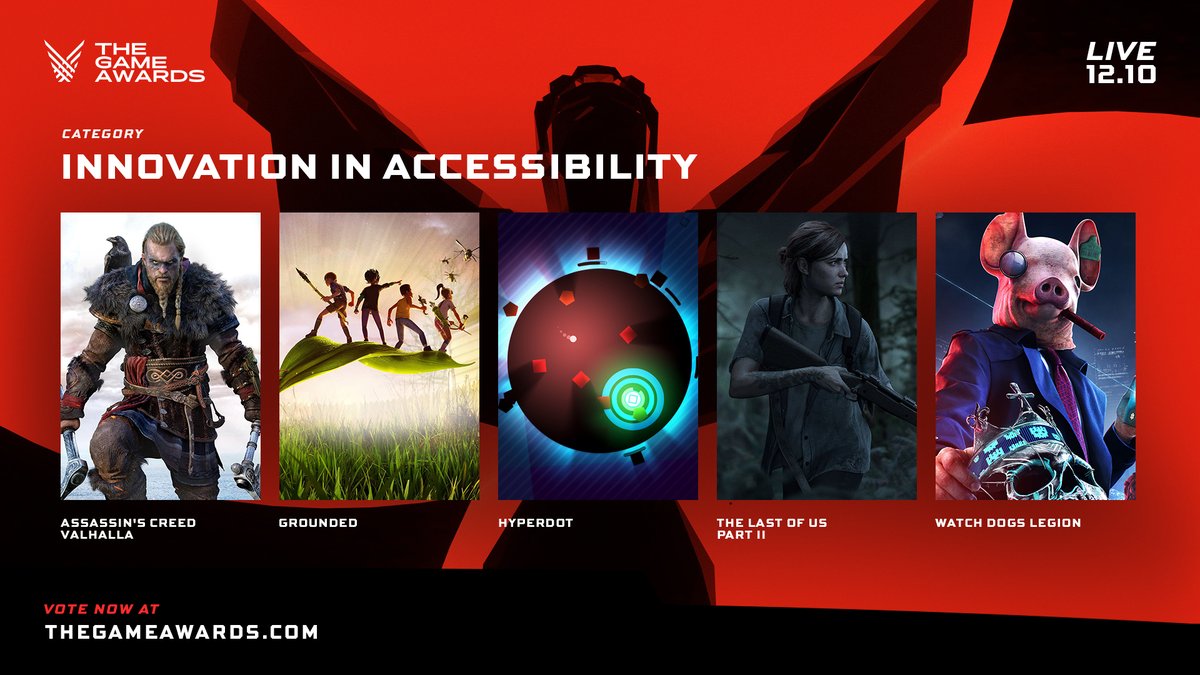 In fact, people play the same game all over the world.”
In fact, people play the same game all over the world.”  Until 2017, the winners were chosen by 28 experts and representatives, and since 2017, more than 50 such experts have participated in the awards. In 2019The jury also included non-English-language media. Winners are determined by mixed jury voting (90%) and public voting via social media (10%).
Until 2017, the winners were chosen by 28 experts and representatives, and since 2017, more than 50 such experts have participated in the awards. In 2019The jury also included non-English-language media. Winners are determined by mixed jury voting (90%) and public voting via social media (10%). 
 It is an annual awards ceremony dedicated to games made for mobile devices and is also the longest running international mobile game competition. IMGA was founded in 2004. Its roots sprout straight from France, but ceremonies take place in different cities of the USA and Asia.
It is an annual awards ceremony dedicated to games made for mobile devices and is also the longest running international mobile game competition. IMGA was founded in 2004. Its roots sprout straight from France, but ceremonies take place in different cities of the USA and Asia.  During the two-day judging process, the list is reduced to 60 candidates.
During the two-day judging process, the list is reduced to 60 candidates.  The event was held in Los Angeles, Santa Monica and Las Vegas. The show first took place on December 2, 2003 and ran annually from 2003 to 2013. In 2013, the Spike Video Game Awards show was renamed VGX (replacing the old acronym VGA). Its producers wanted to show the special attention that the show pays to games and next-generation gaming platforms. The only VGX ceremony, as we remember, failed.
The event was held in Los Angeles, Santa Monica and Las Vegas. The show first took place on December 2, 2003 and ran annually from 2003 to 2013. In 2013, the Spike Video Game Awards show was renamed VGX (replacing the old acronym VGA). Its producers wanted to show the special attention that the show pays to games and next-generation gaming platforms. The only VGX ceremony, as we remember, failed. 

 Just keep in mind that good games are not only those that have awards.
Just keep in mind that good games are not only those that have awards.  She competed with hits like Apex Legends Mobile, Diablo Immortal and Genshin Impact.
She competed with hits like Apex Legends Mobile, Diablo Immortal and Genshin Impact.  Final Fantasy XIV and Stray have two each.
Final Fantasy XIV and Stray have two each. 
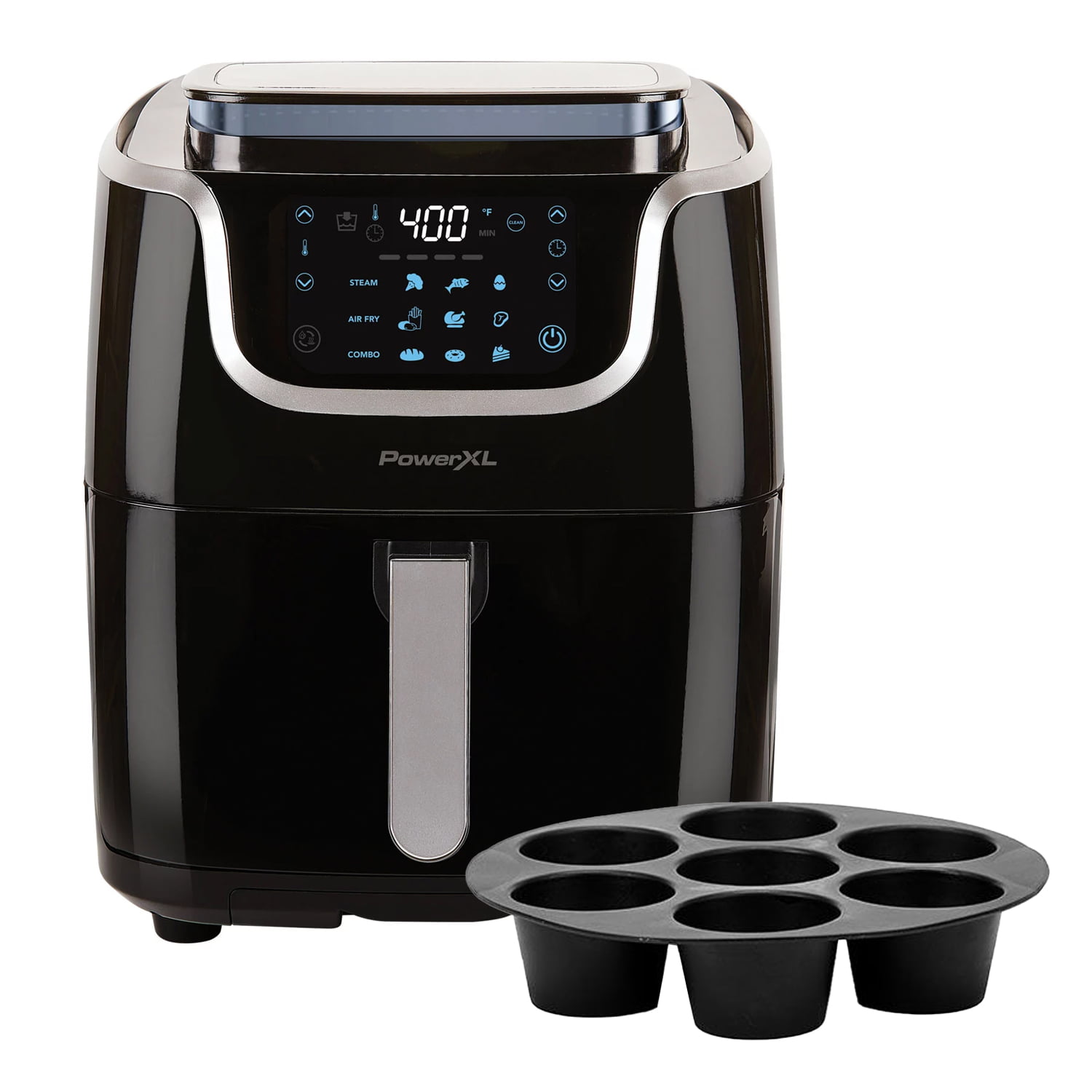 7 x 14.2 x 15 inches (32.25 x 36.06 x 38.1 cm)
7 x 14.2 x 15 inches (32.25 x 36.06 x 38.1 cm) 9 out of 5
9 out of 5 4 cm)
4 cm)


 You’ll find that the controls and functions are similar, but they only differ in the interface.
You’ll find that the controls and functions are similar, but they only differ in the interface.  Press the + or – buttons to modify the settings before starting the cooking cycle.
Press the + or – buttons to modify the settings before starting the cooking cycle.
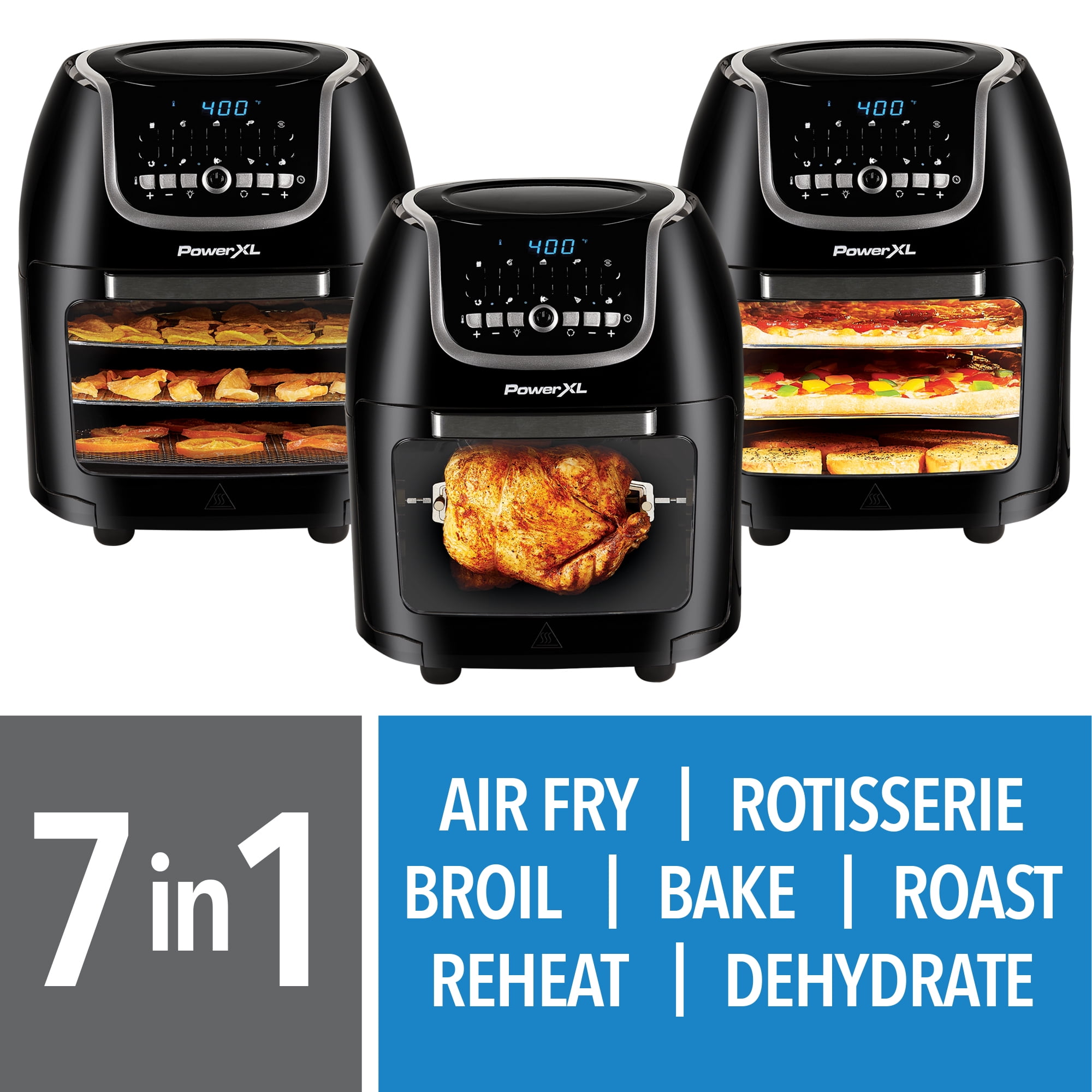 This is because there is more in that spray than just oil, and it can damage the interior of the air fryer.
This is because there is more in that spray than just oil, and it can damage the interior of the air fryer.
 This model is special because it has two baskets and eight present functions: french fry, fish, egg, chicken, bake, steak, dehydrate, and vegetable. This device is incredibly easy to use, it works quickly, and it makes healthier versions of your favorite foods. It has a large capacity so you can cook for the whole family or a group gathering with ease.
This model is special because it has two baskets and eight present functions: french fry, fish, egg, chicken, bake, steak, dehydrate, and vegetable. This device is incredibly easy to use, it works quickly, and it makes healthier versions of your favorite foods. It has a large capacity so you can cook for the whole family or a group gathering with ease. Plus, the fry trays are dishwasher-safe. What more could you want?
Plus, the fry trays are dishwasher-safe. What more could you want?